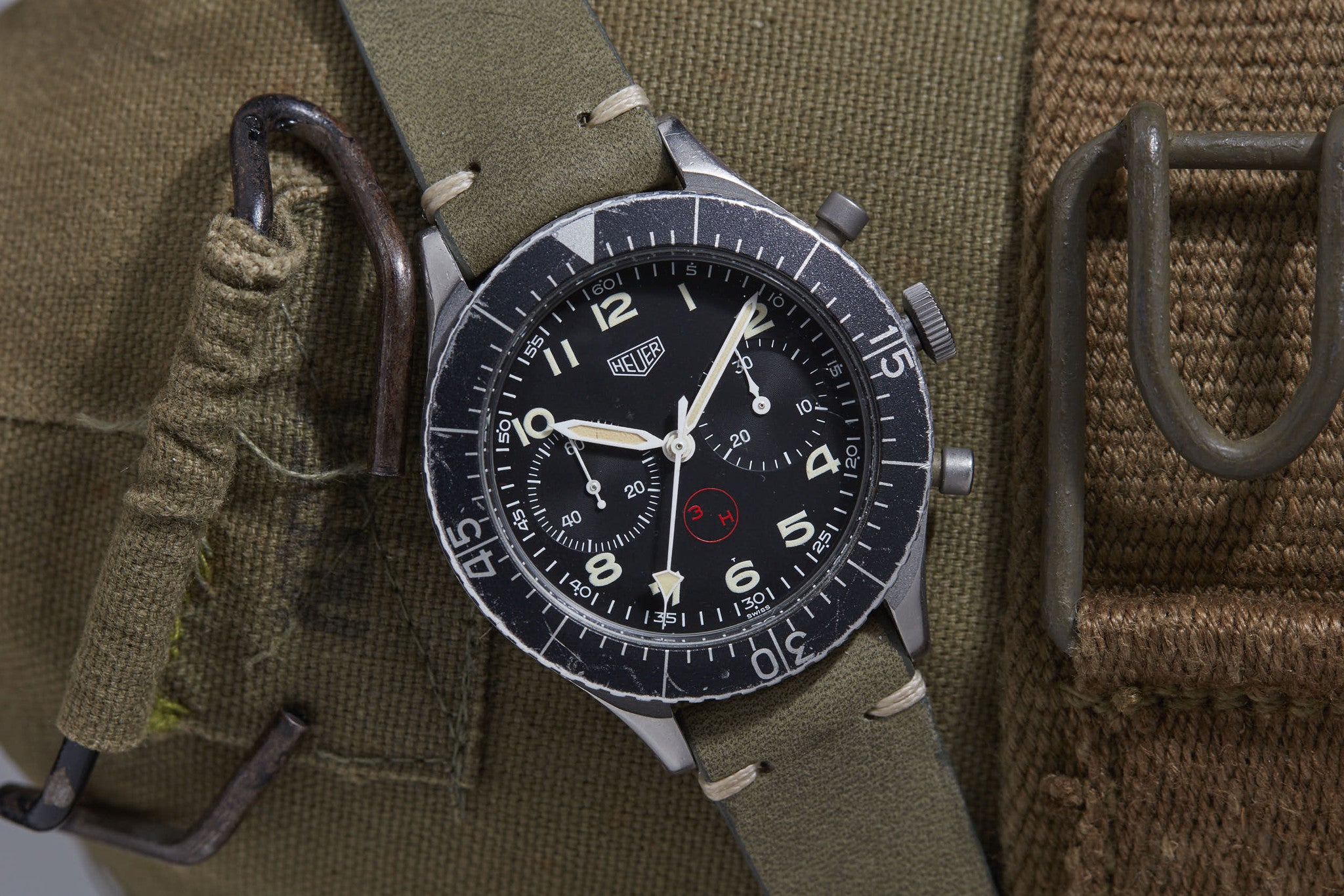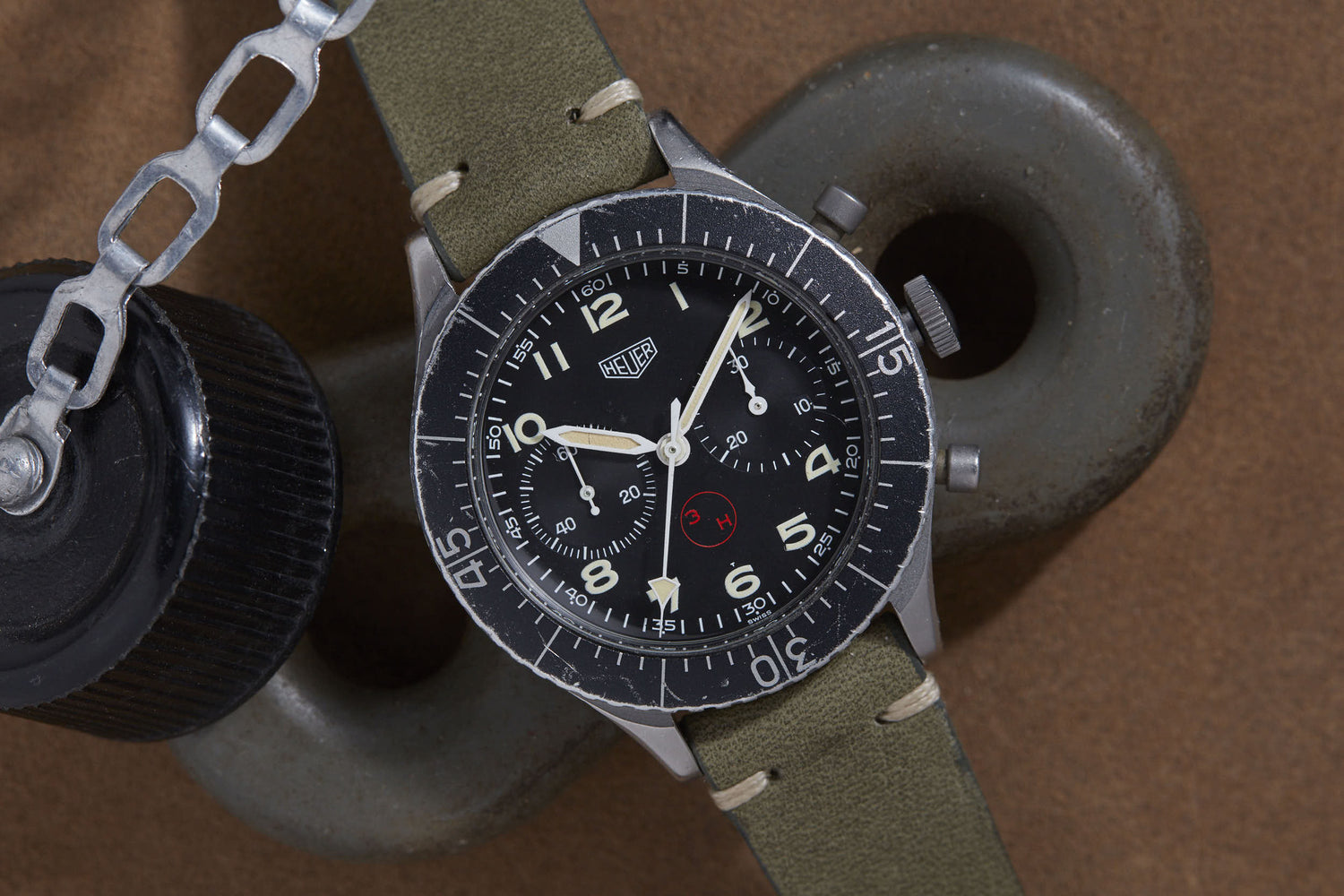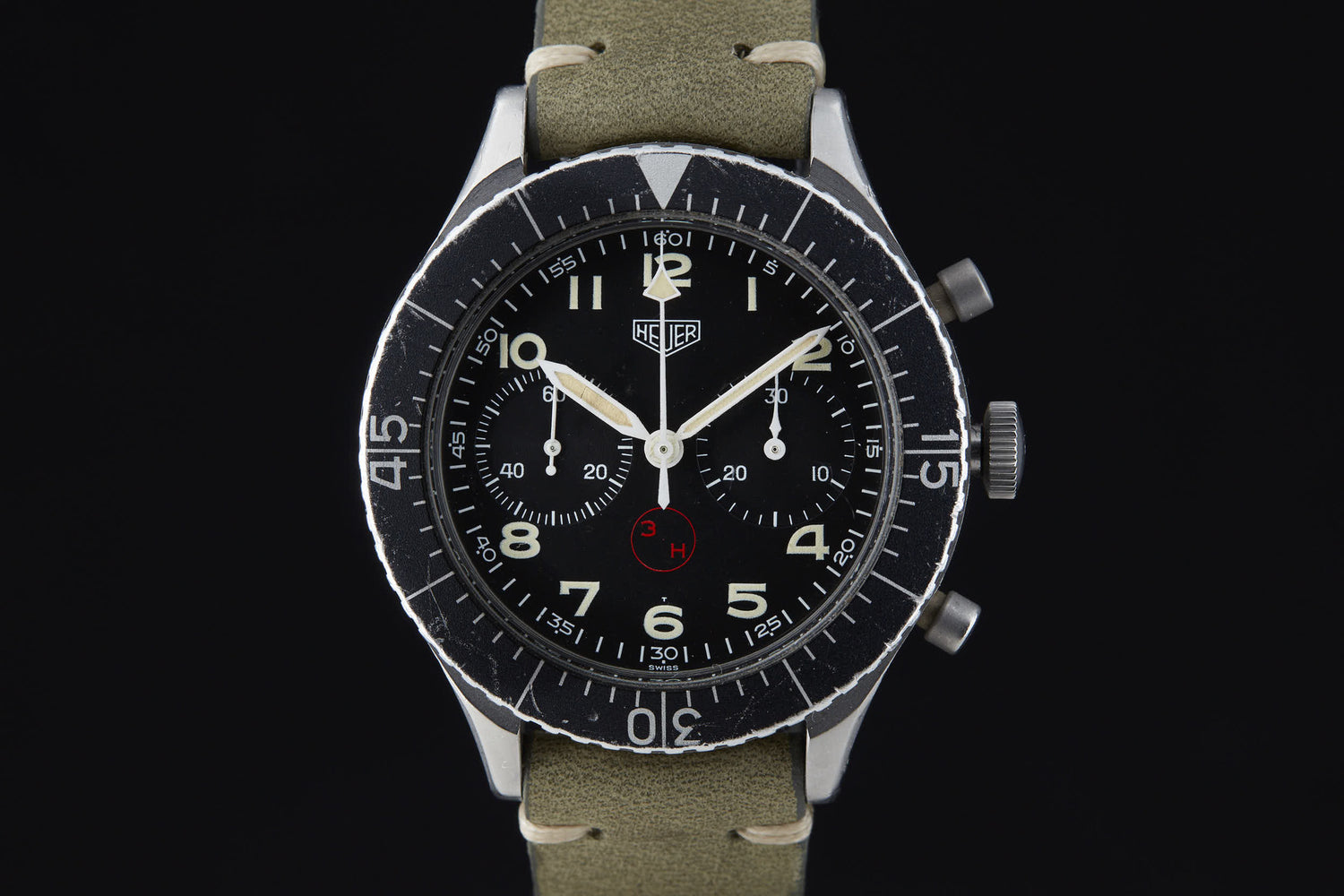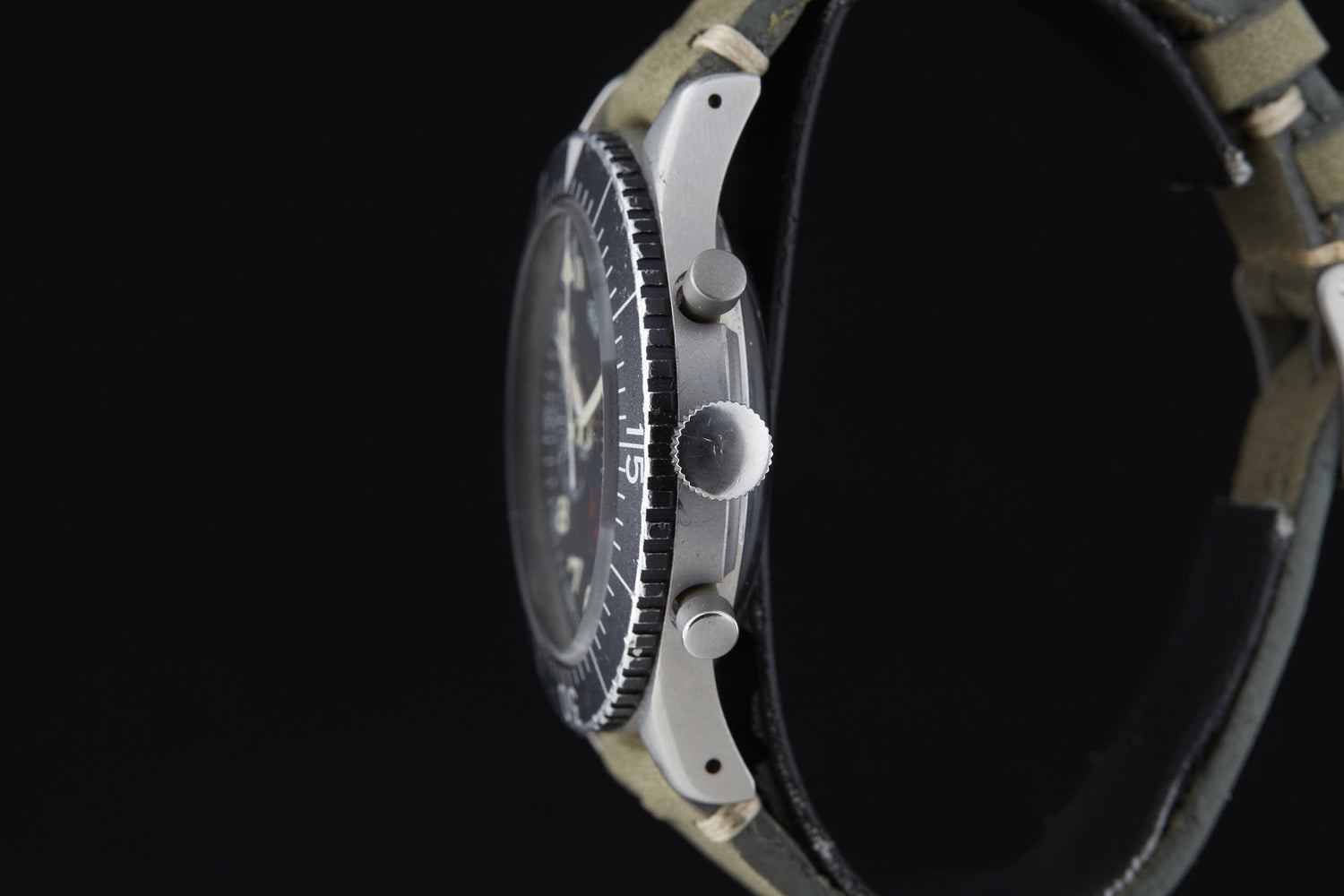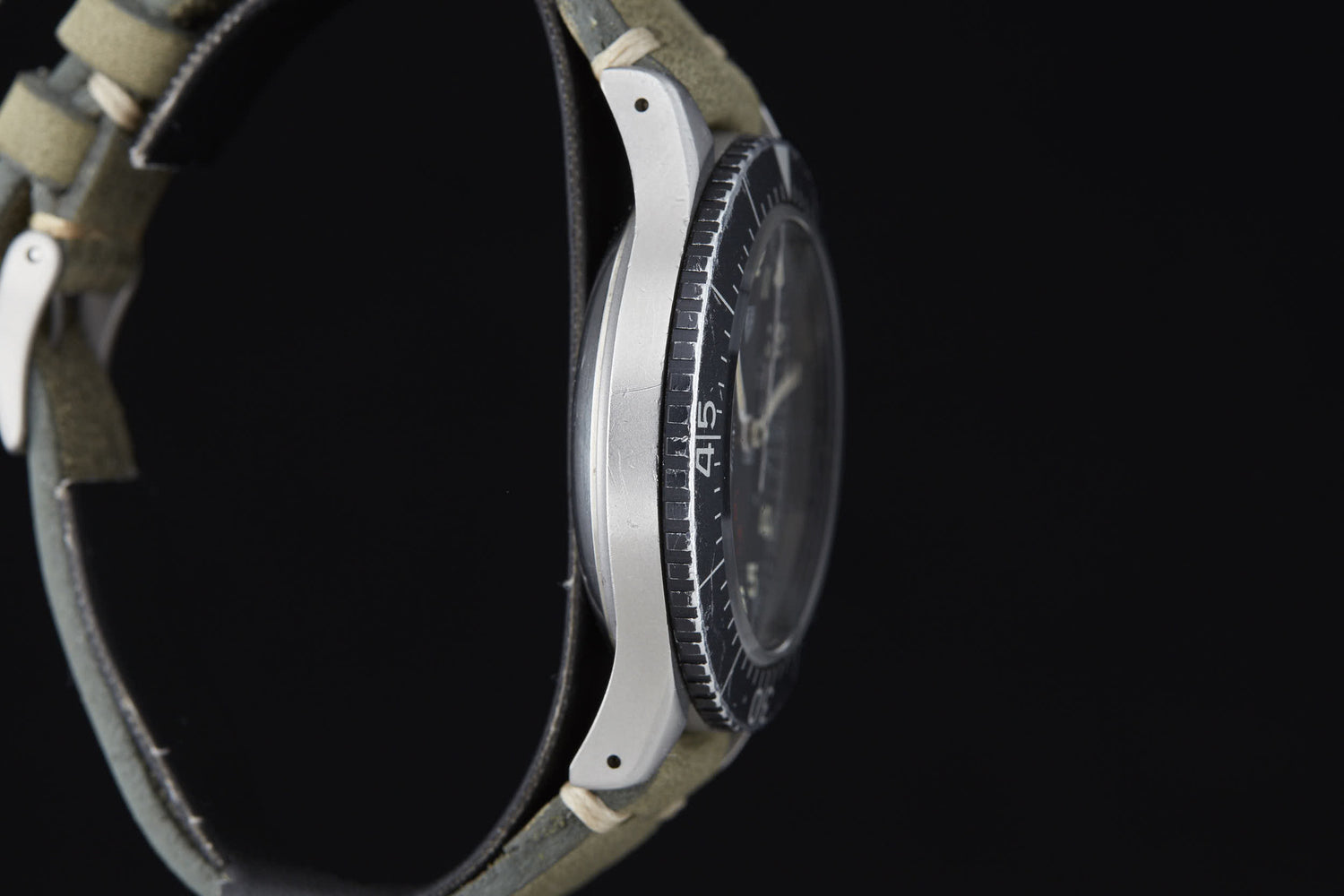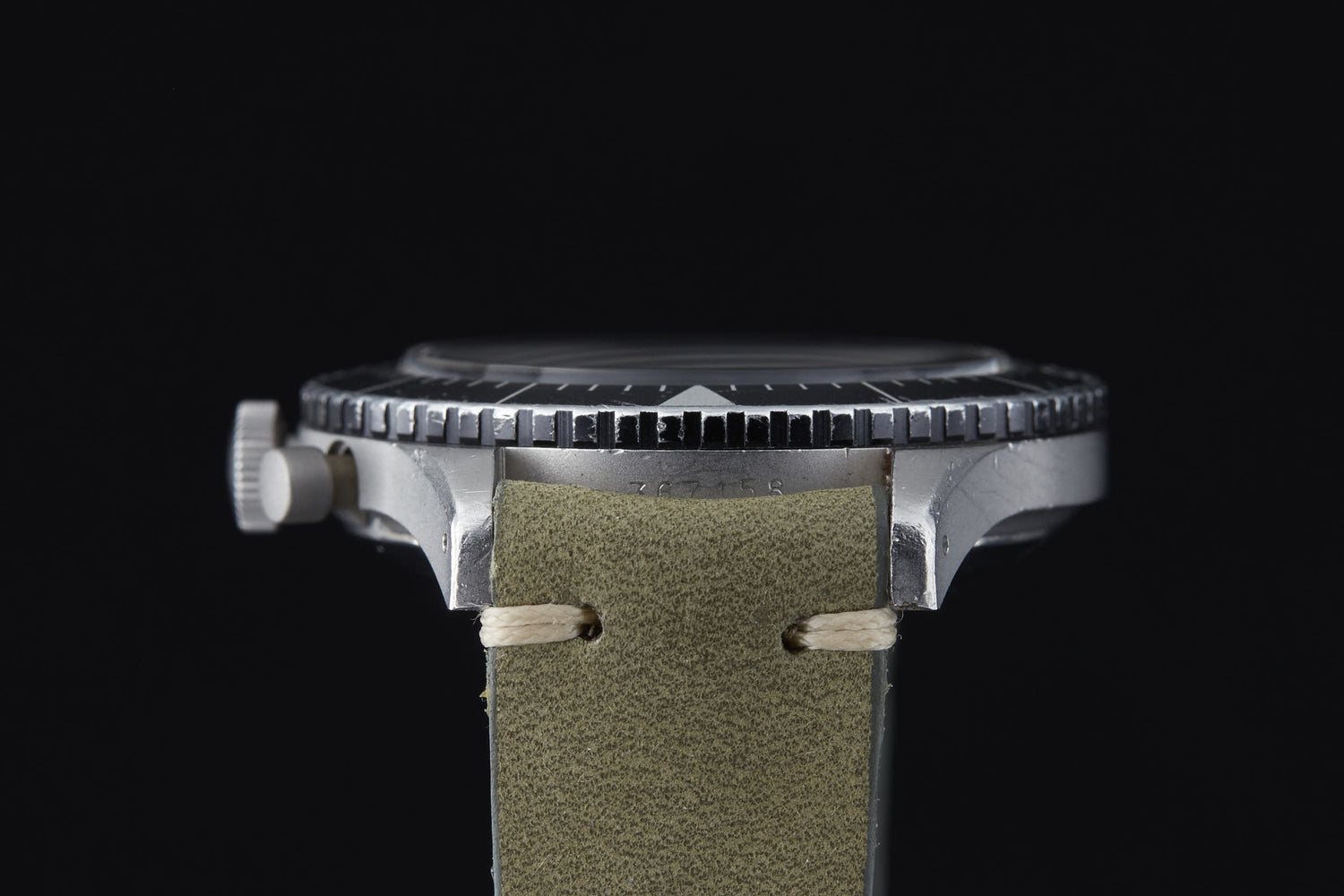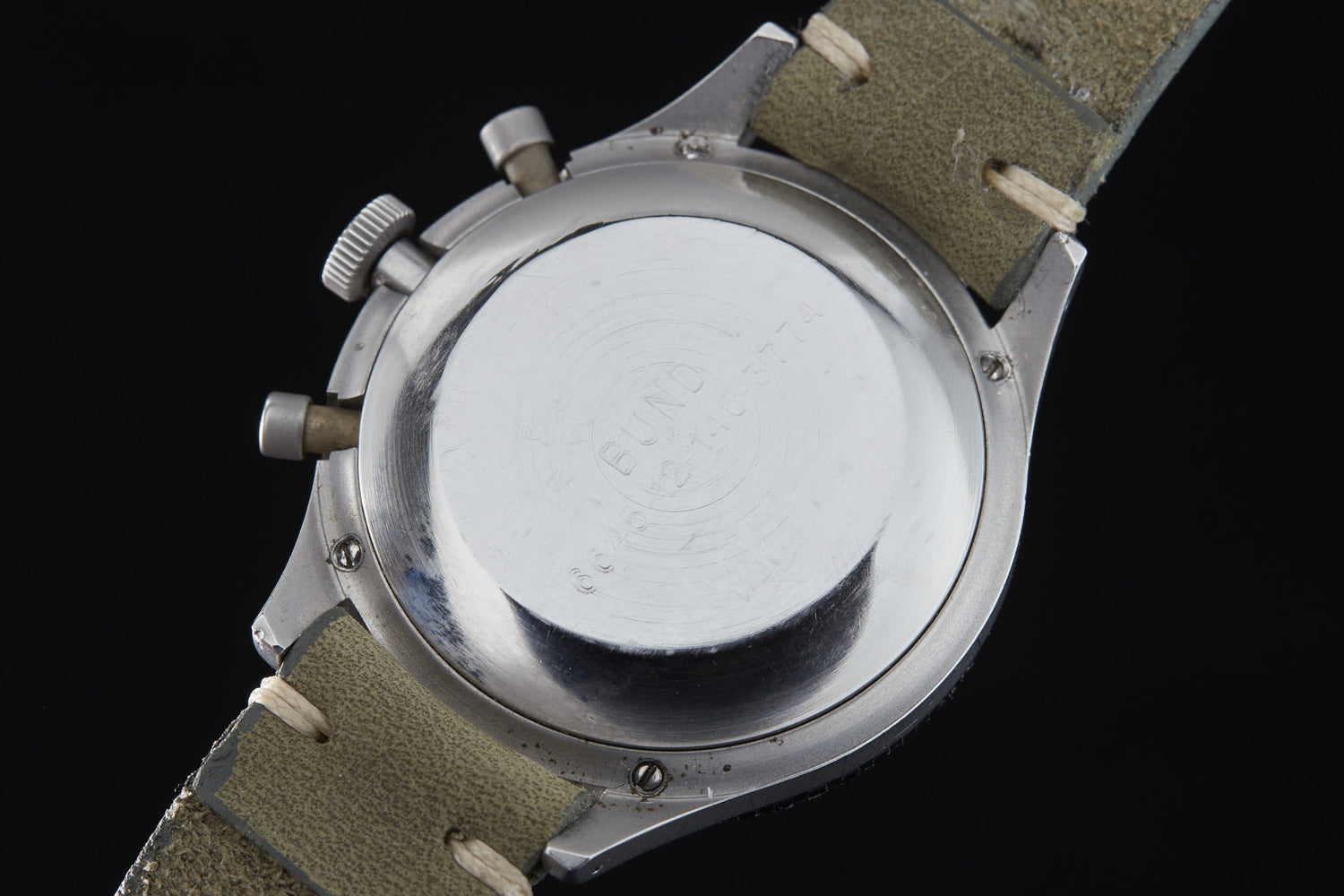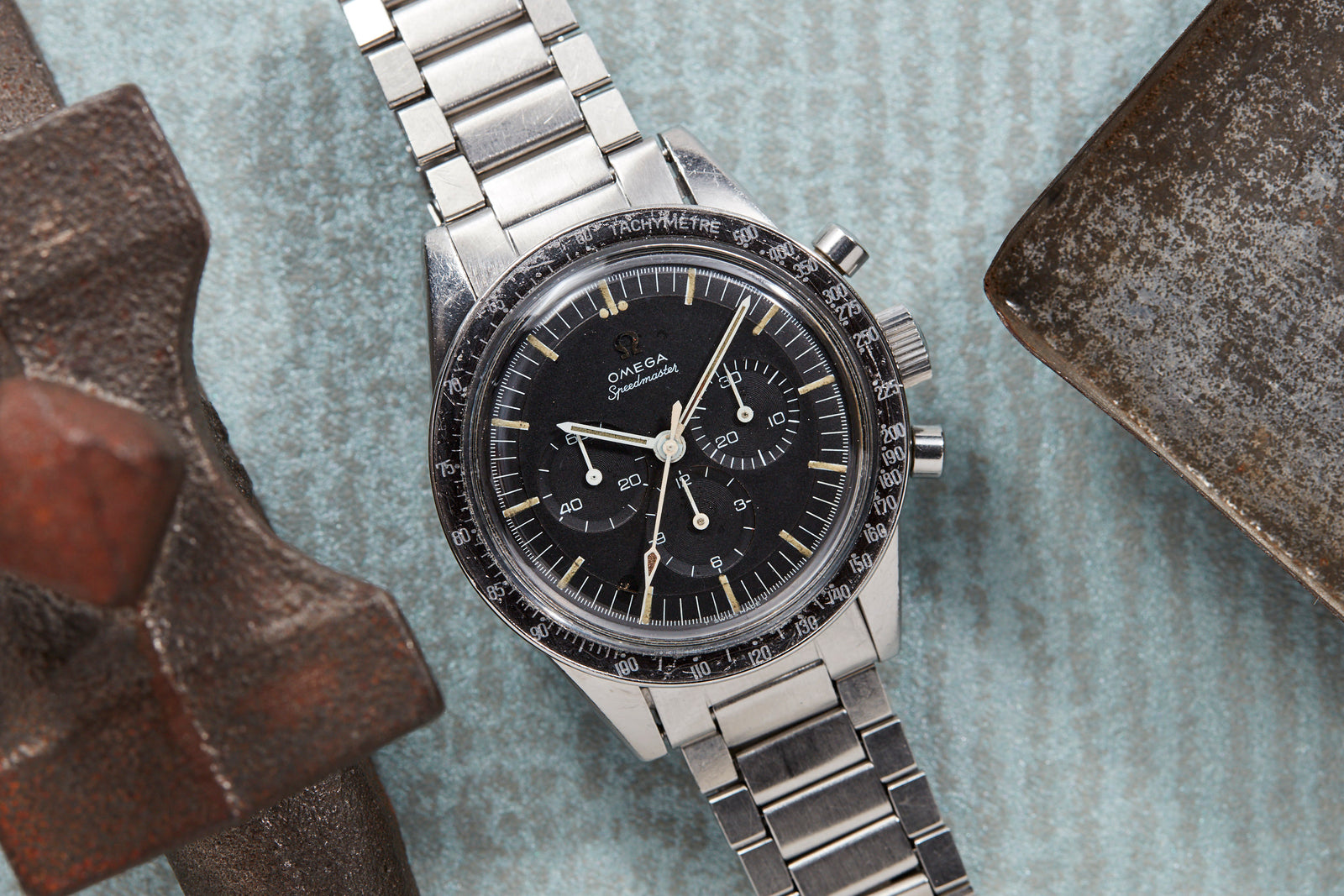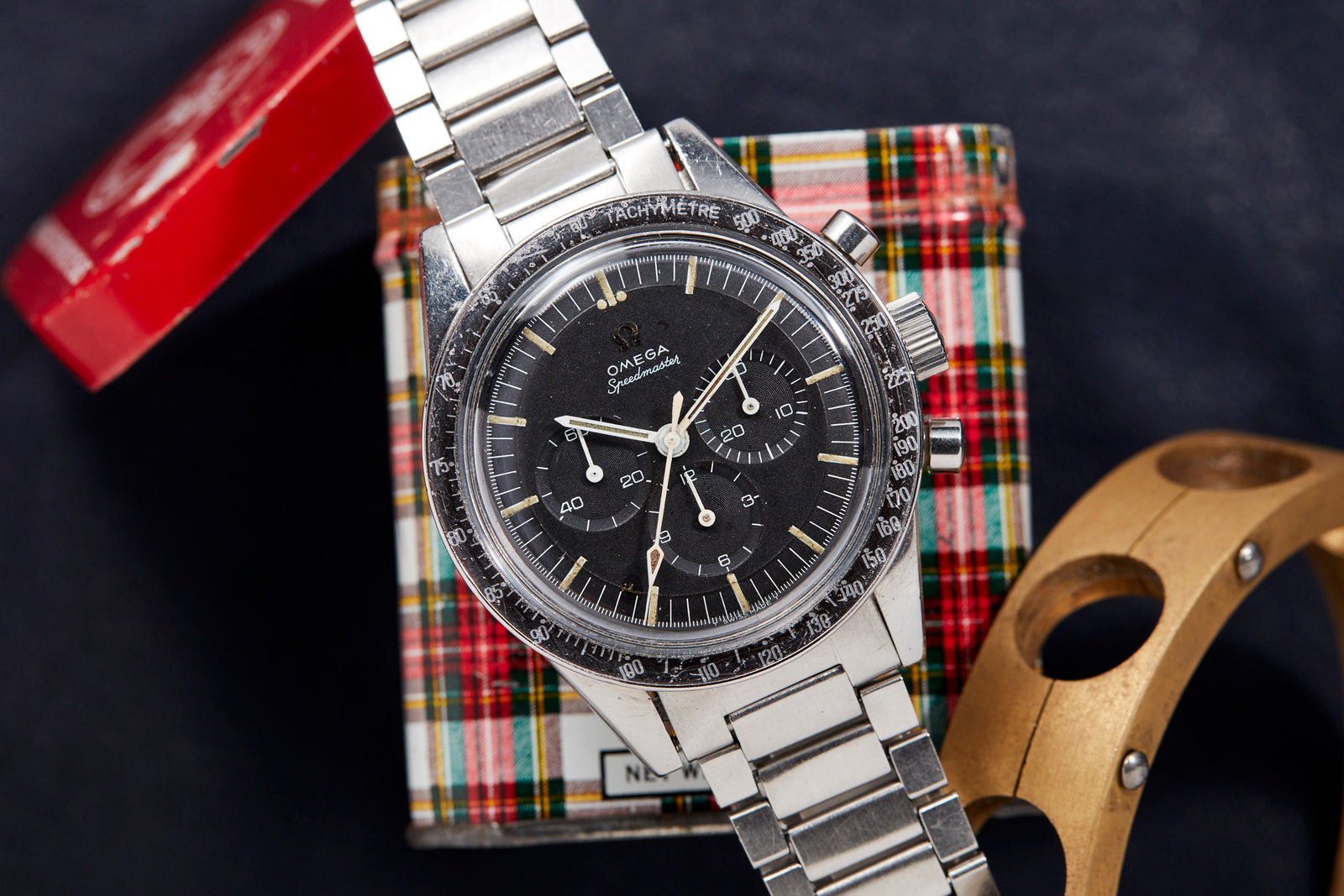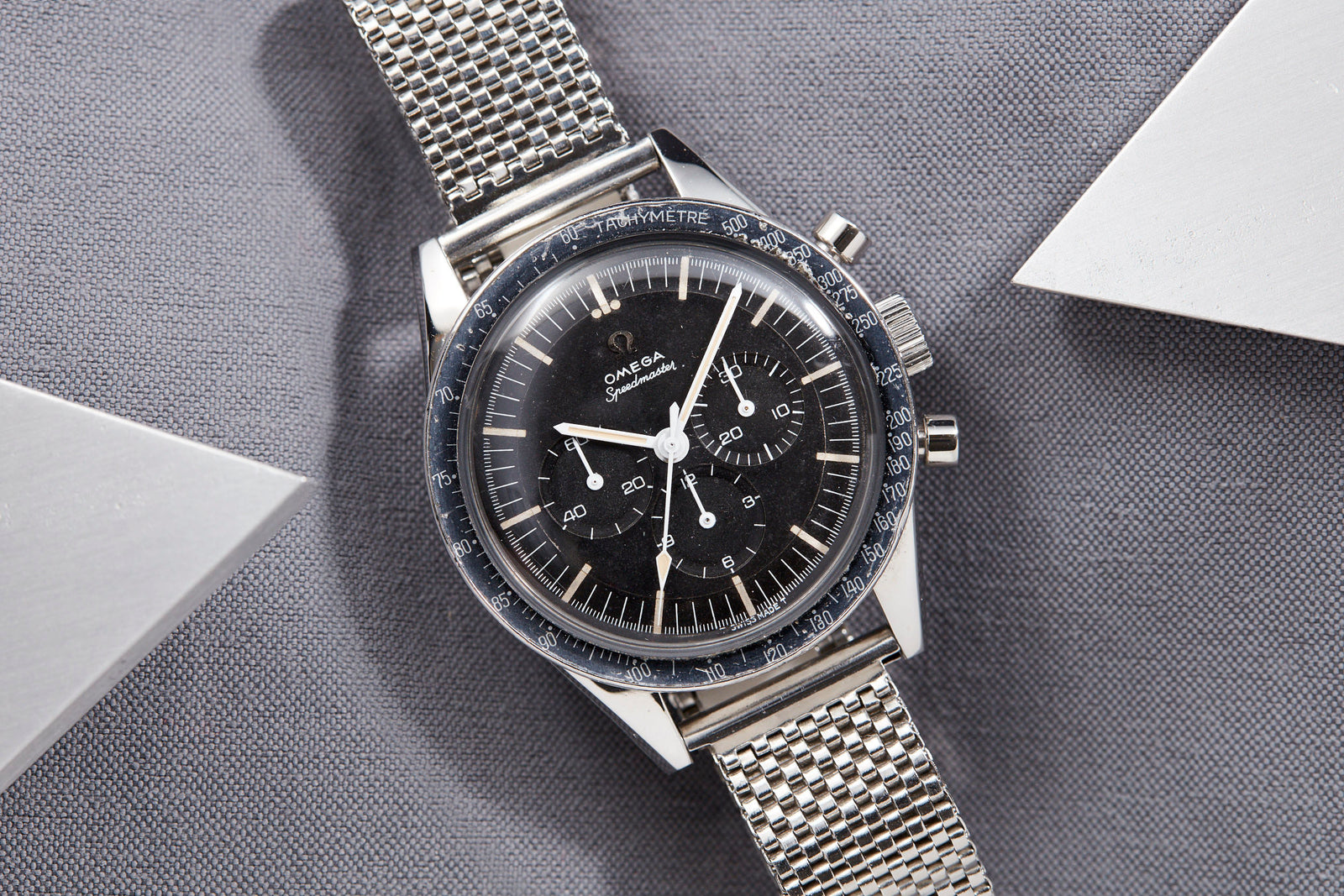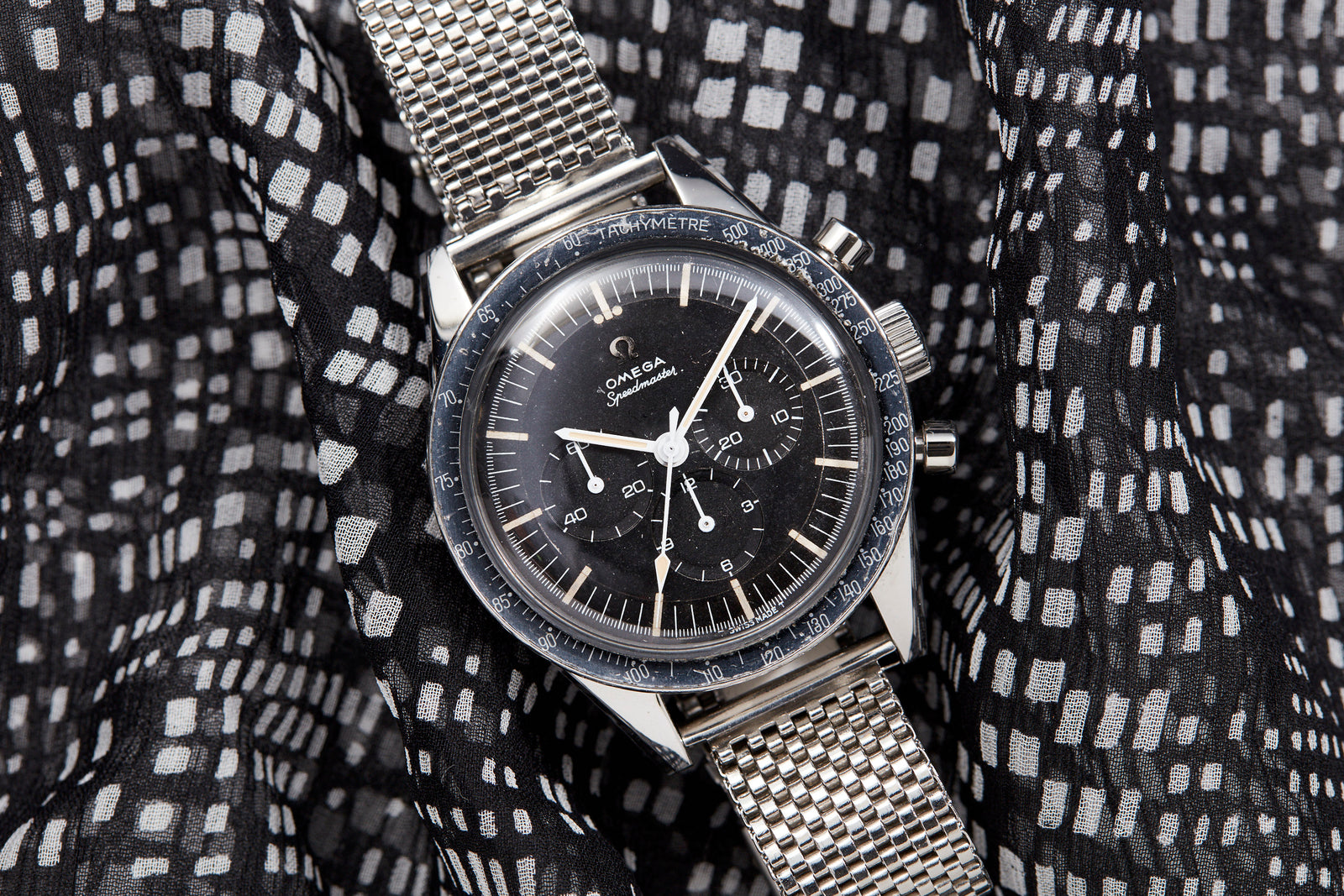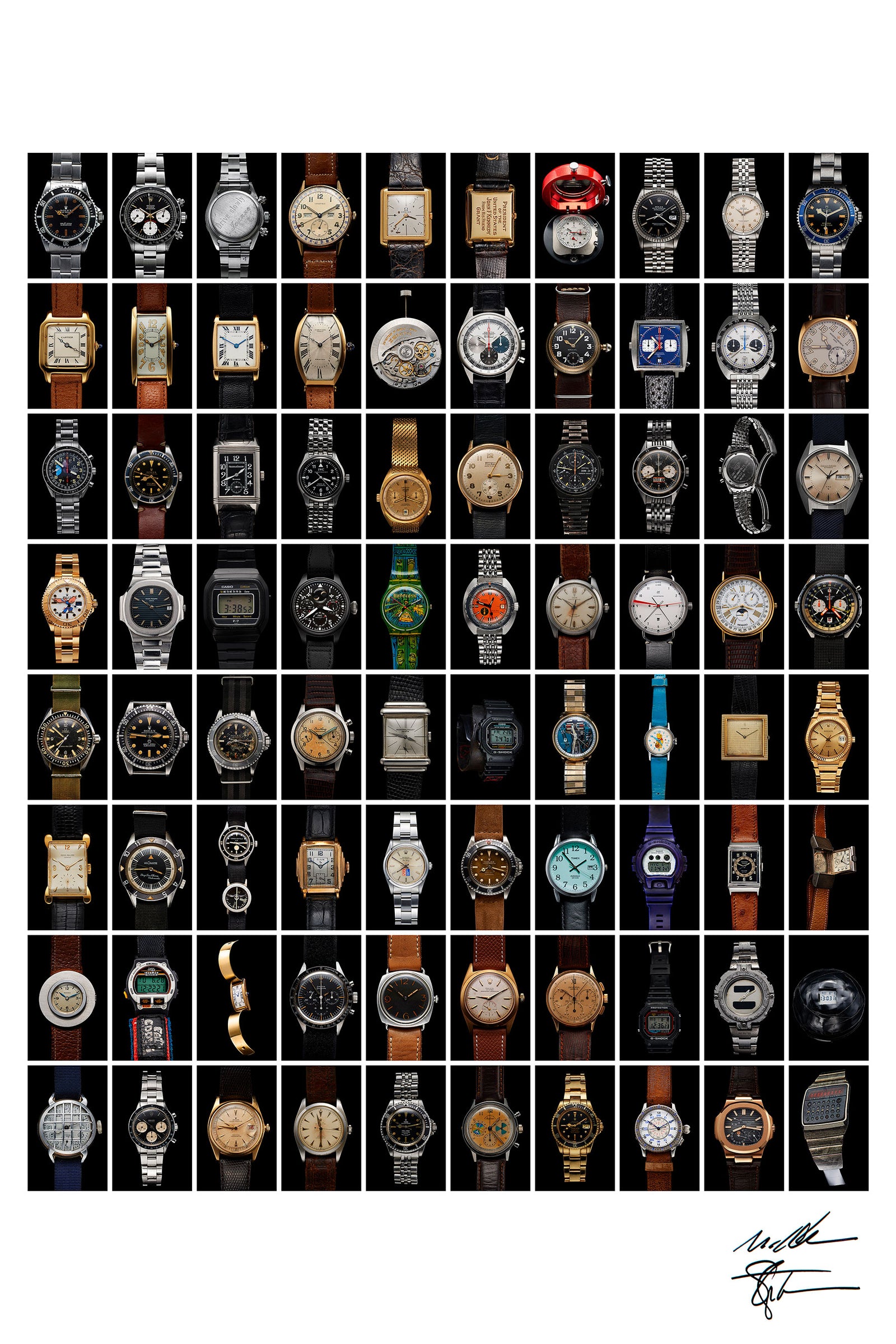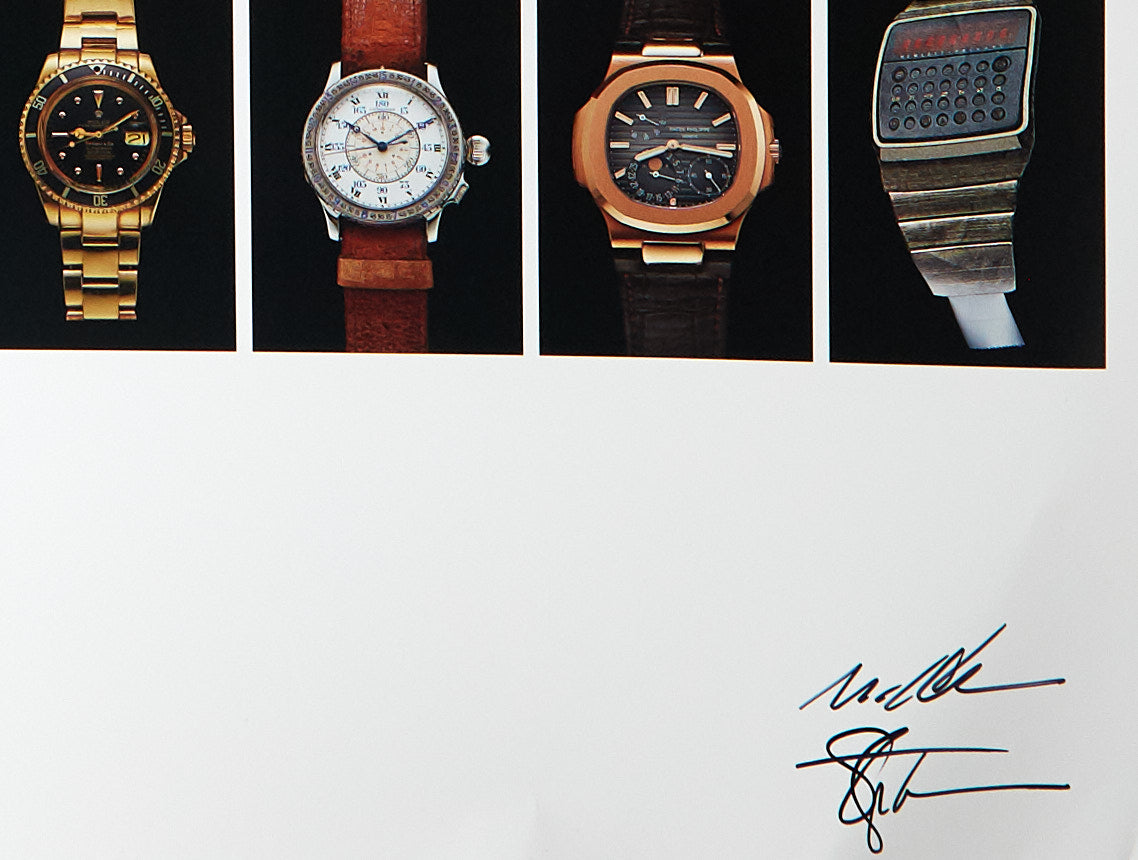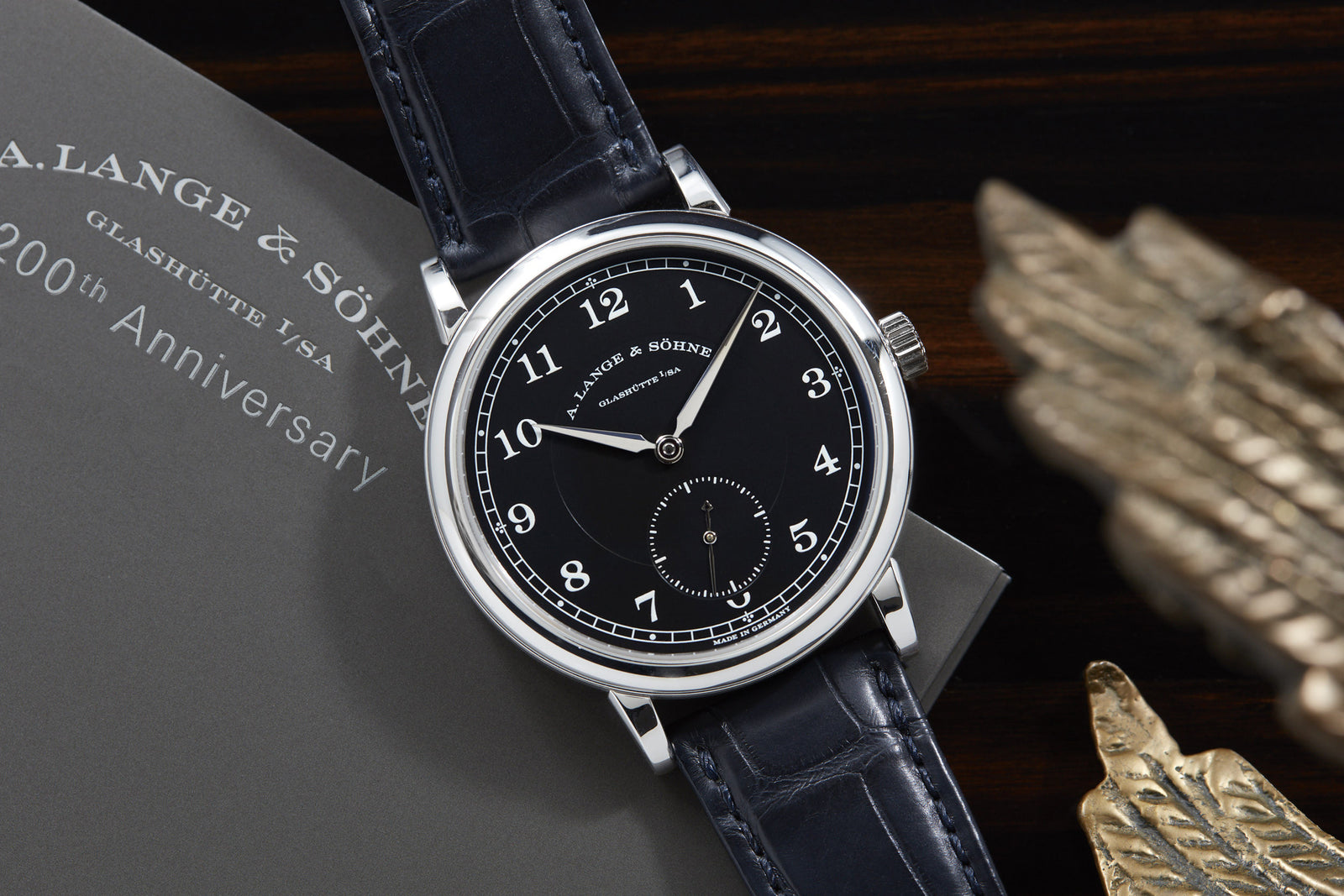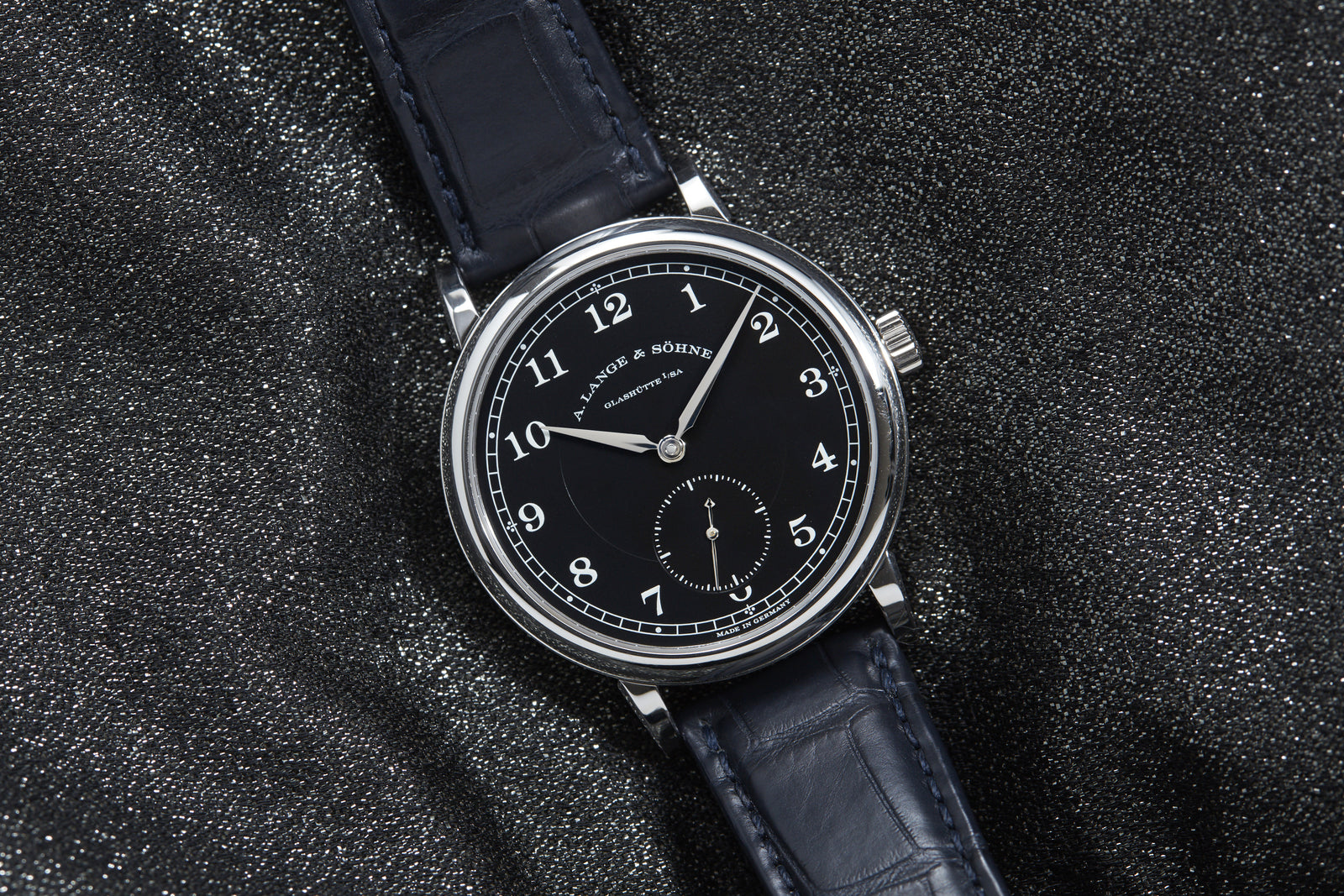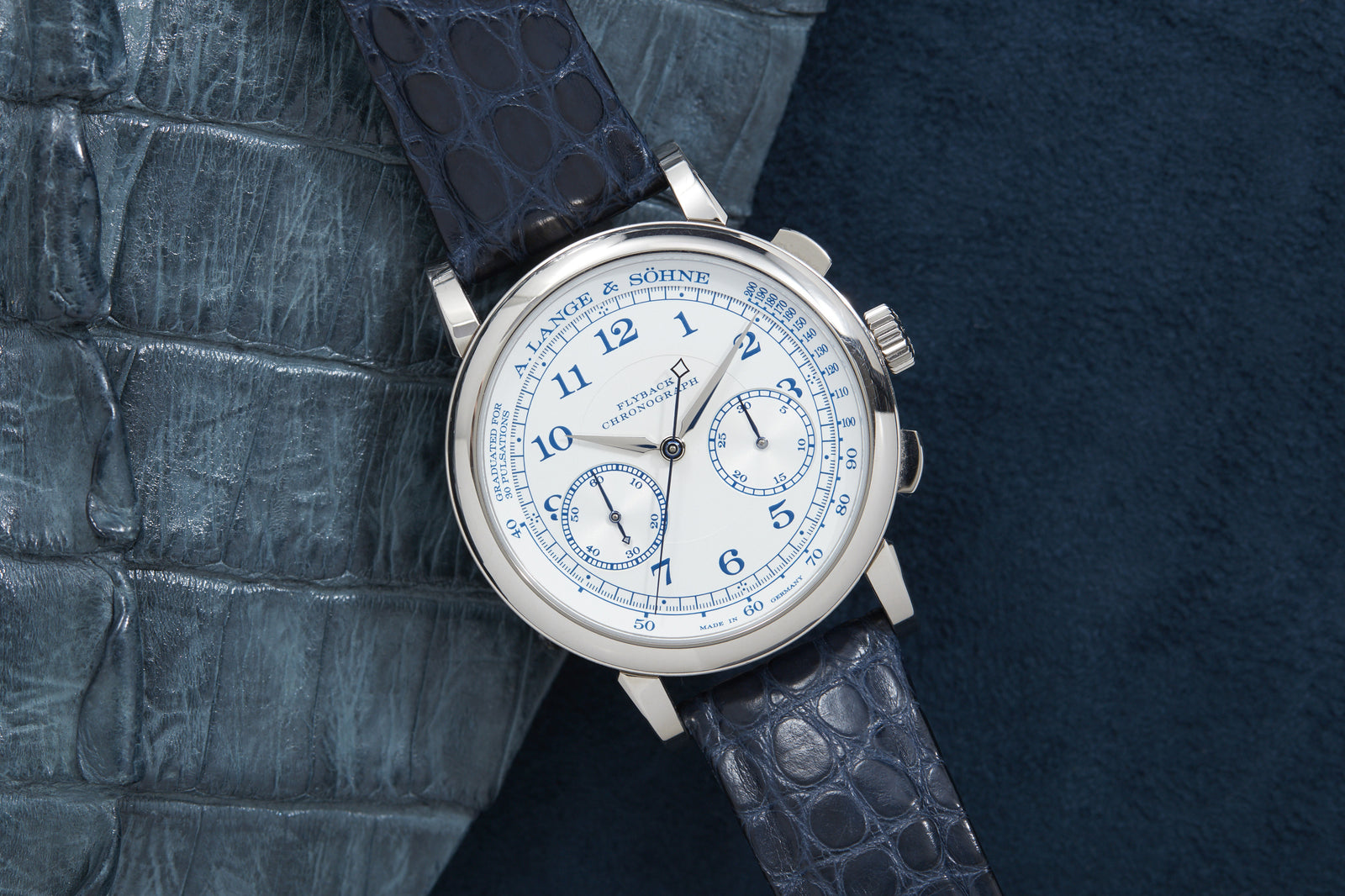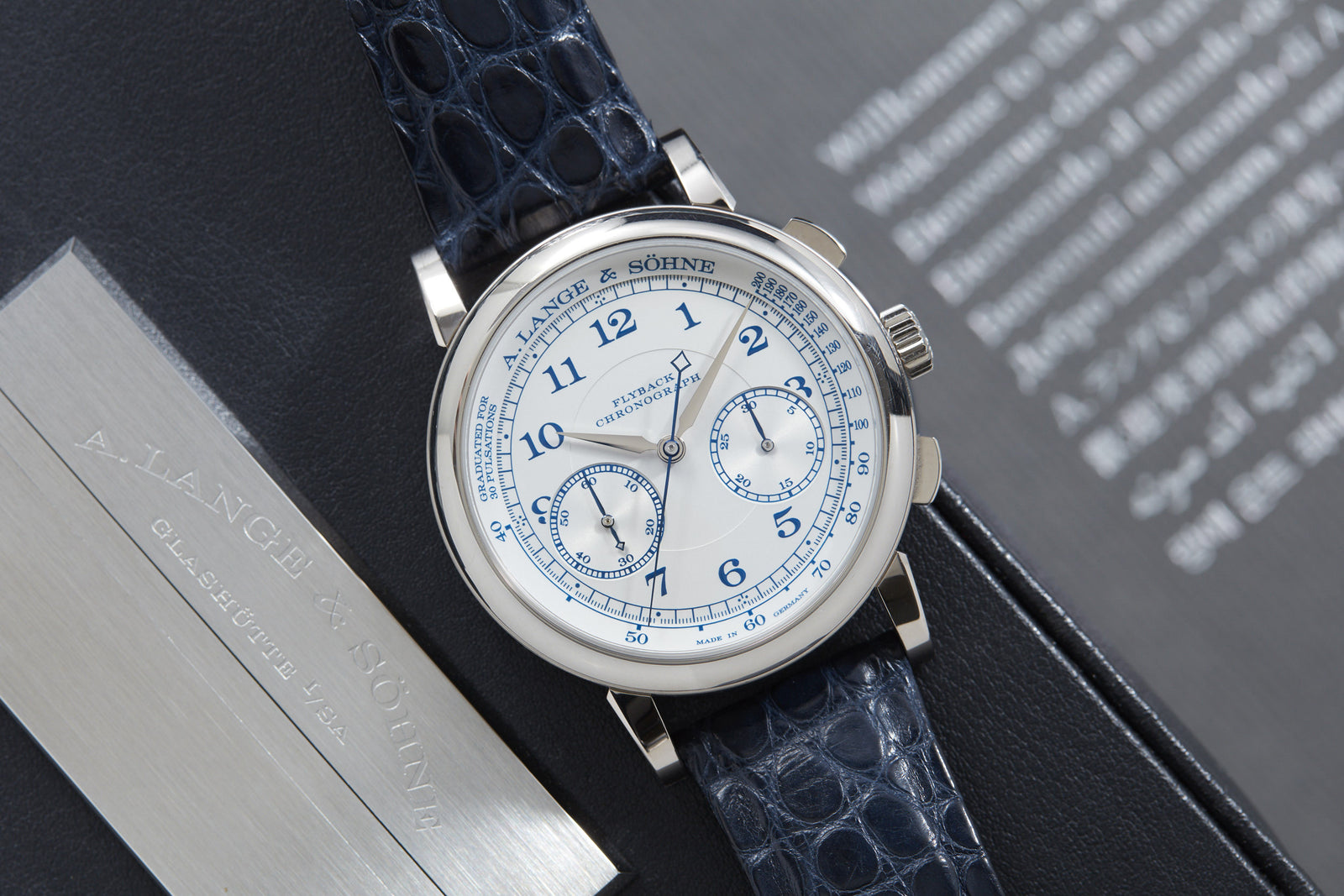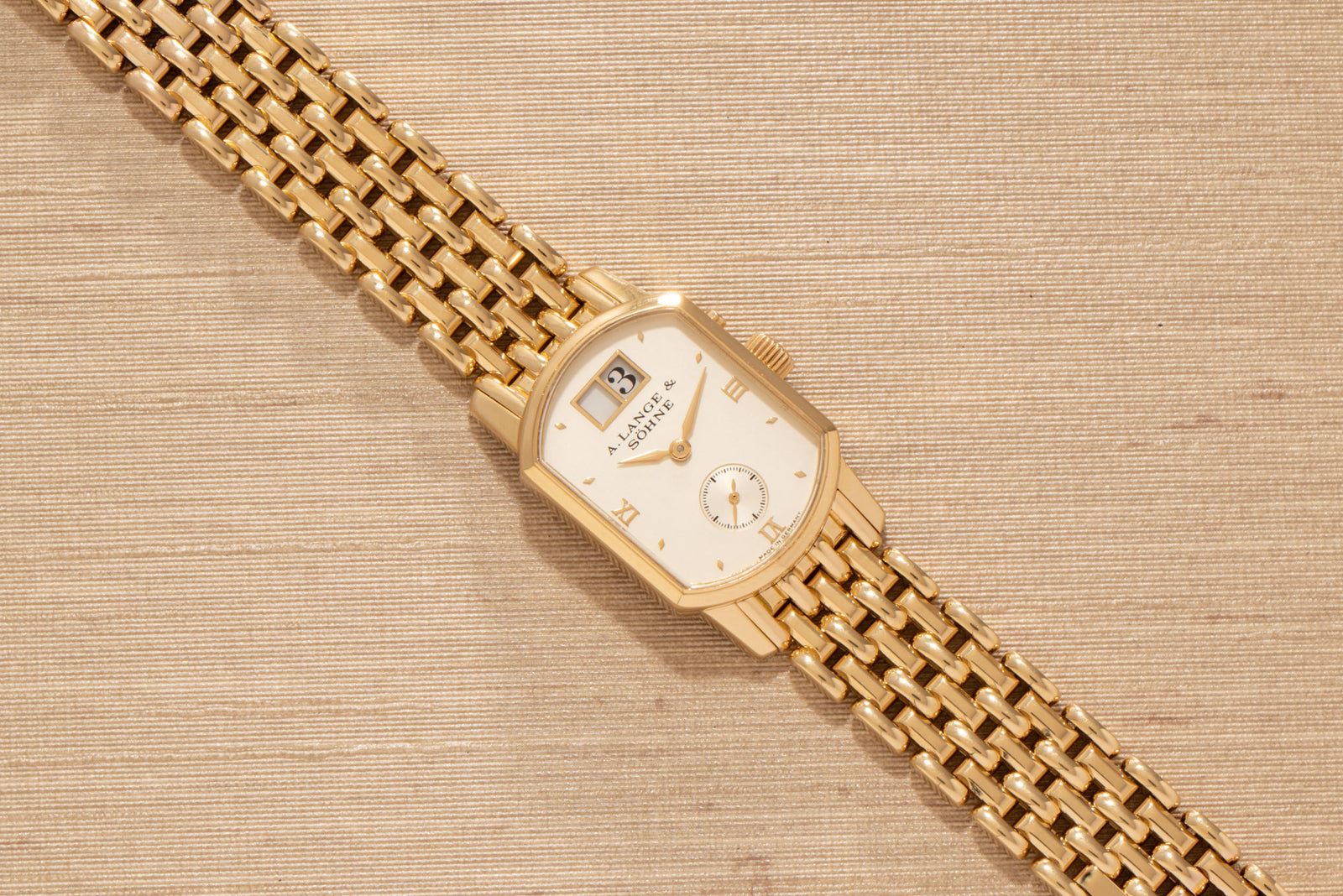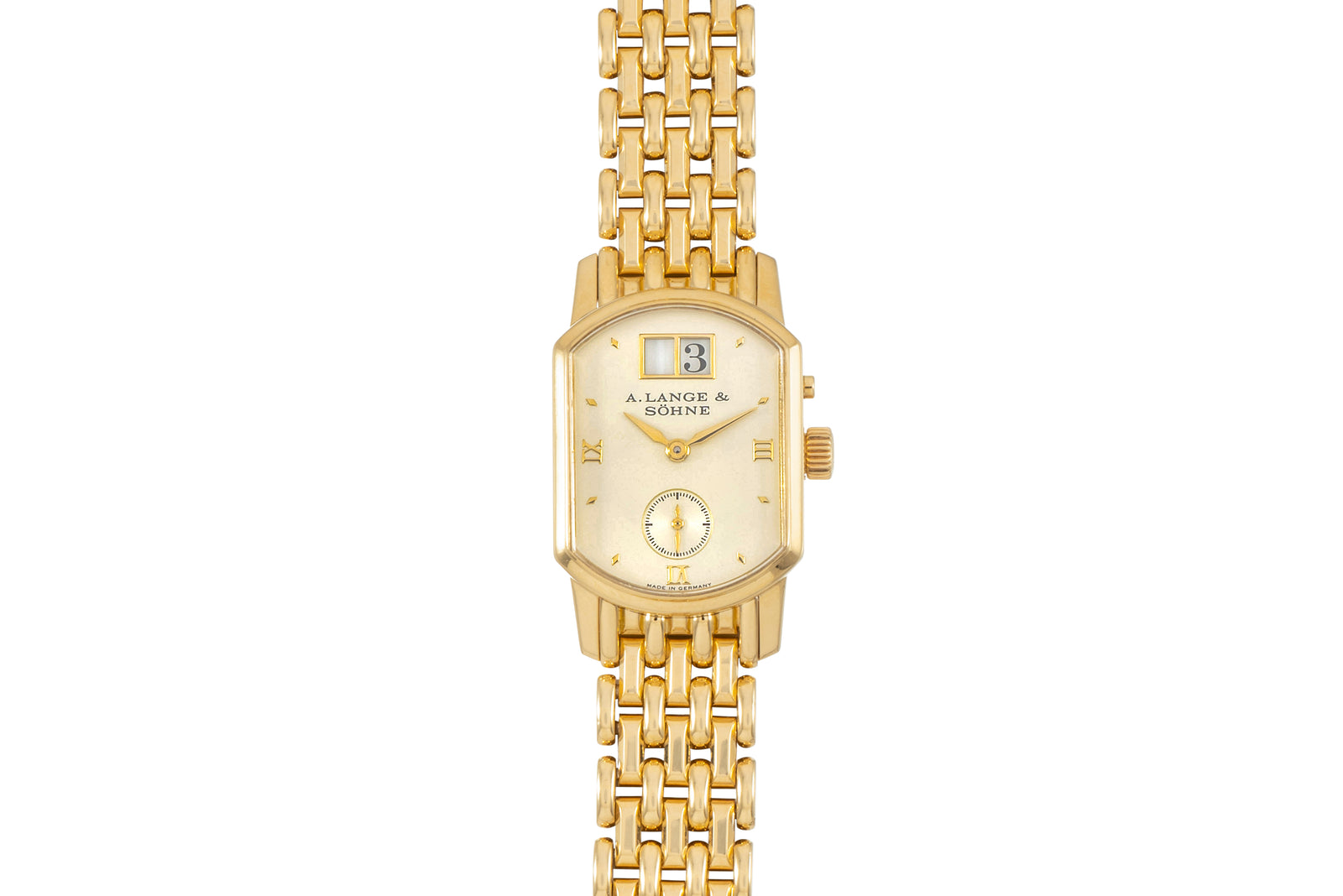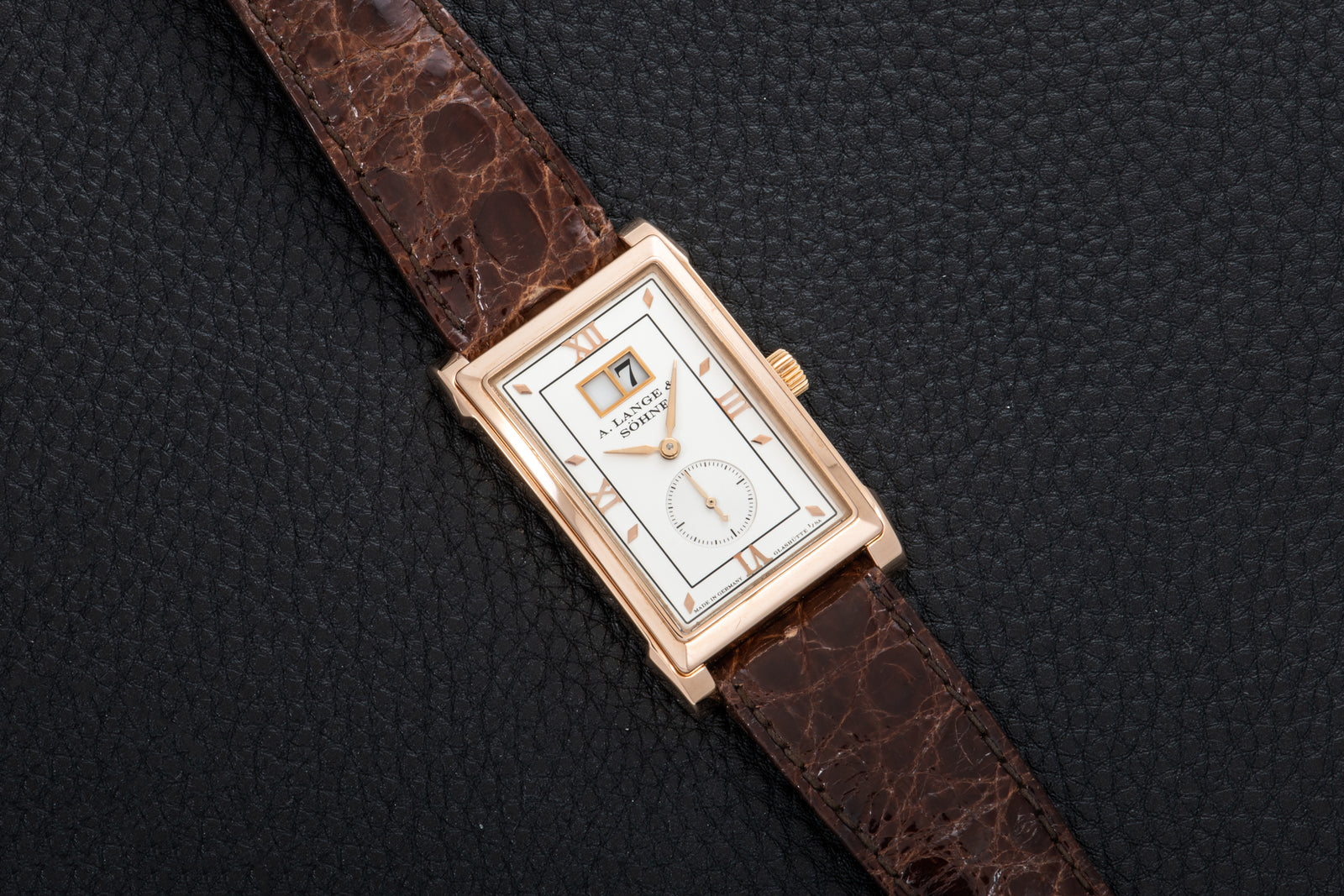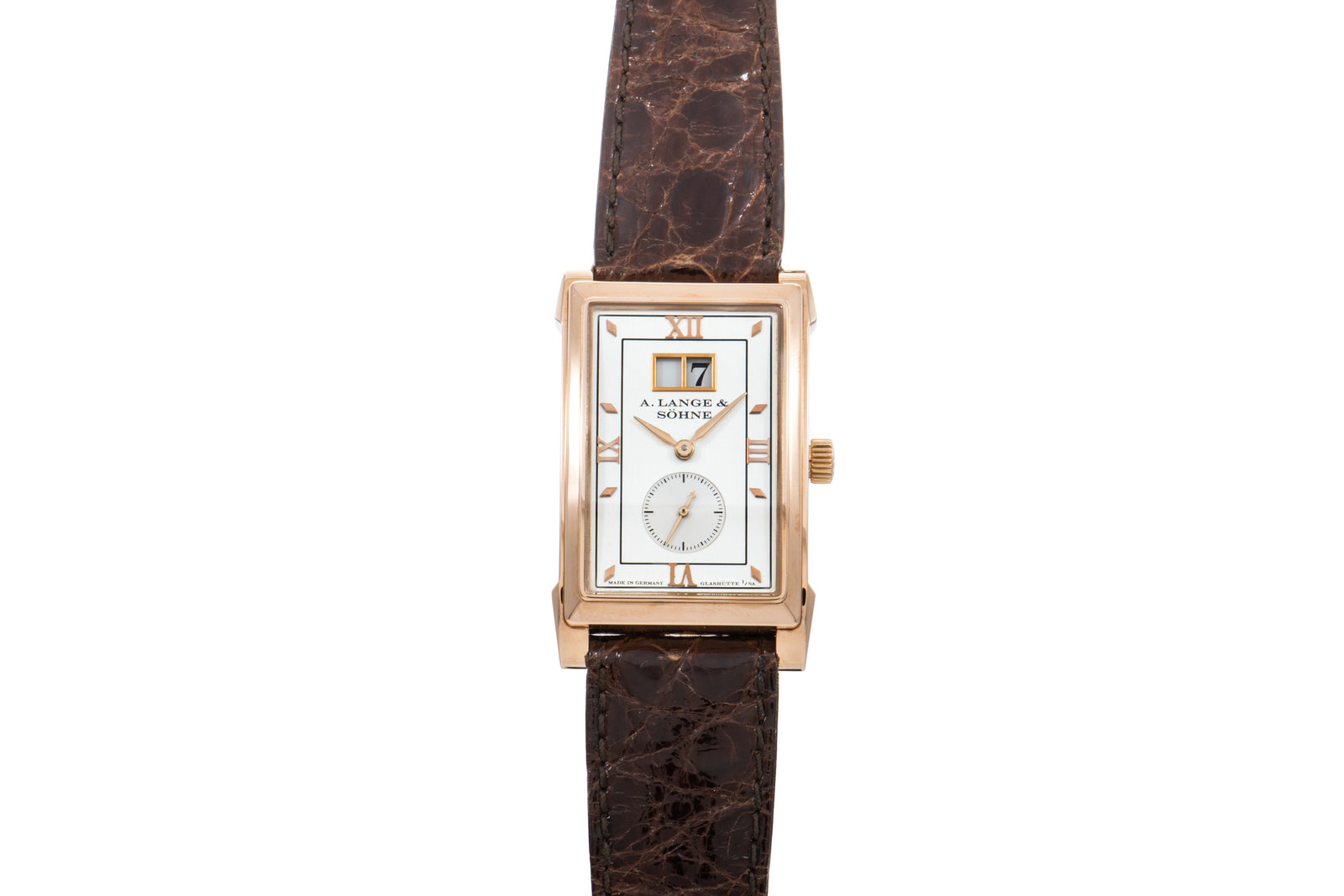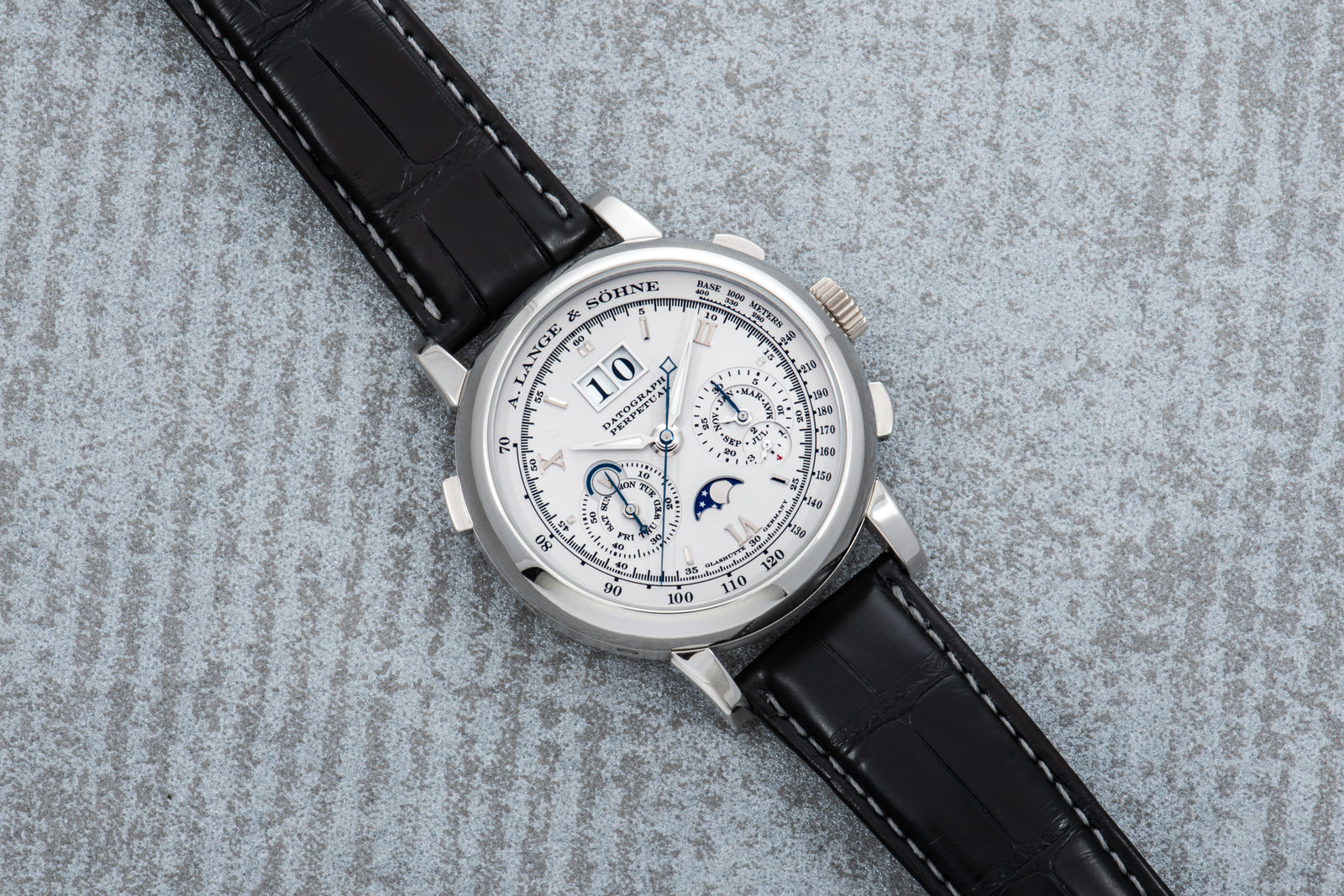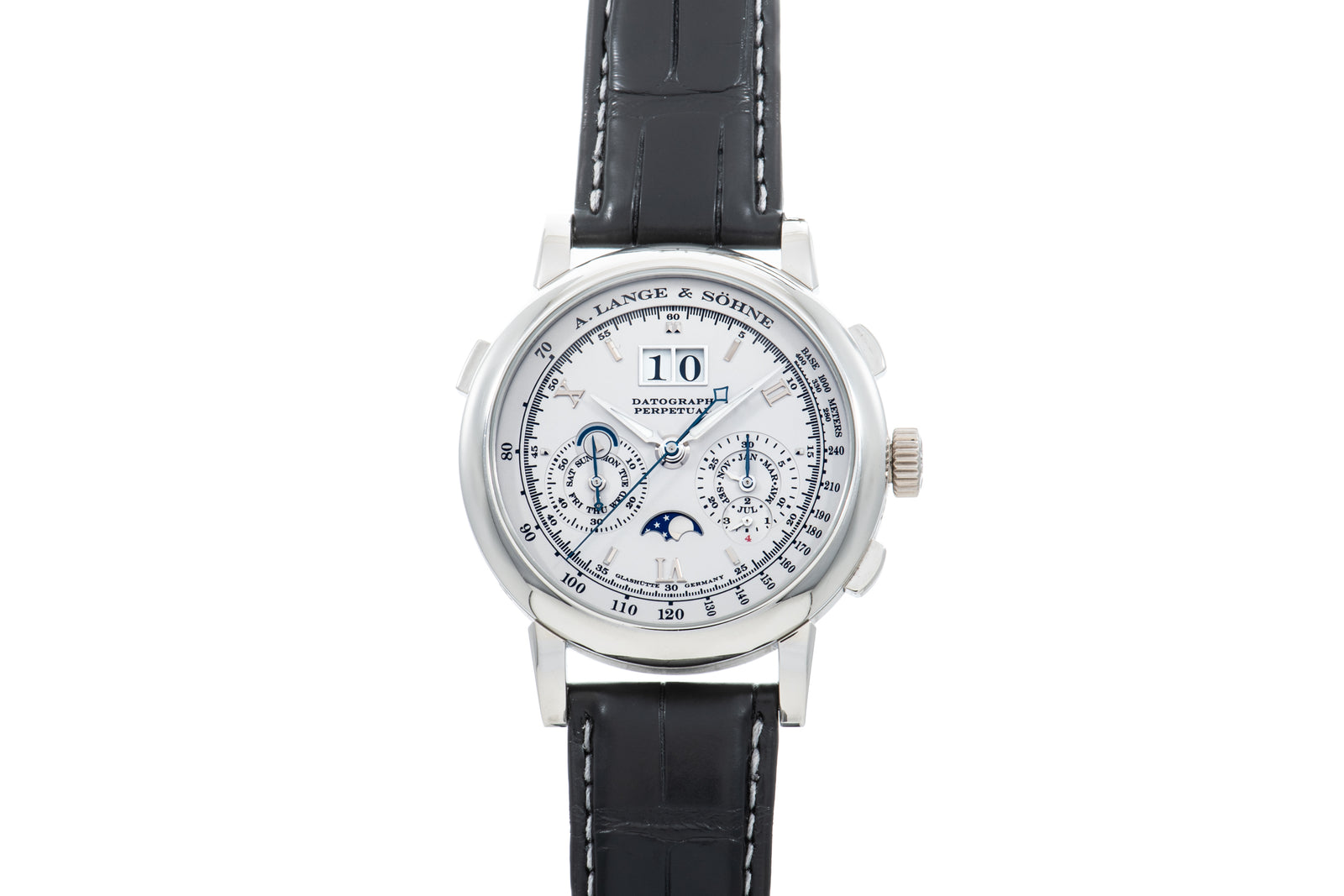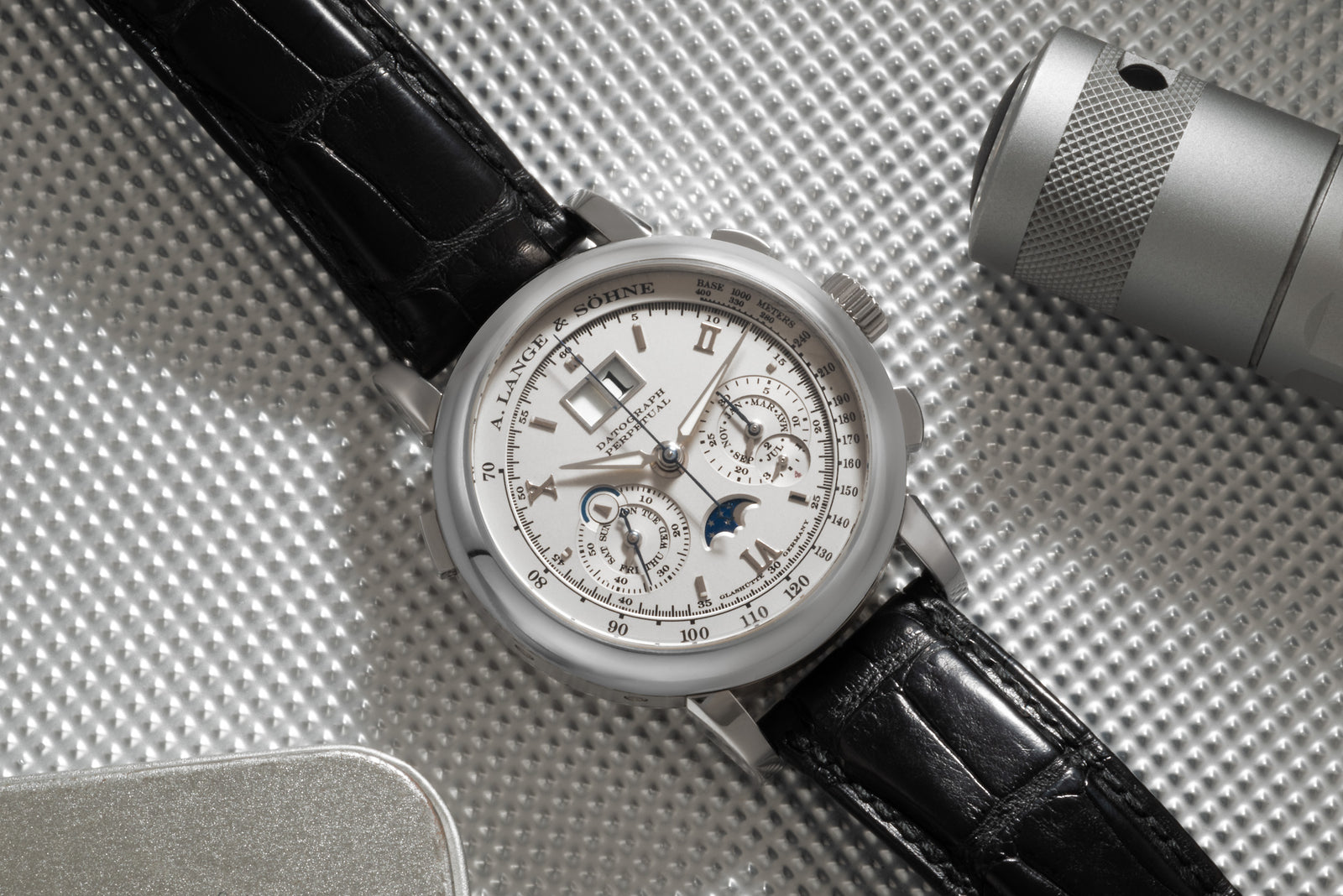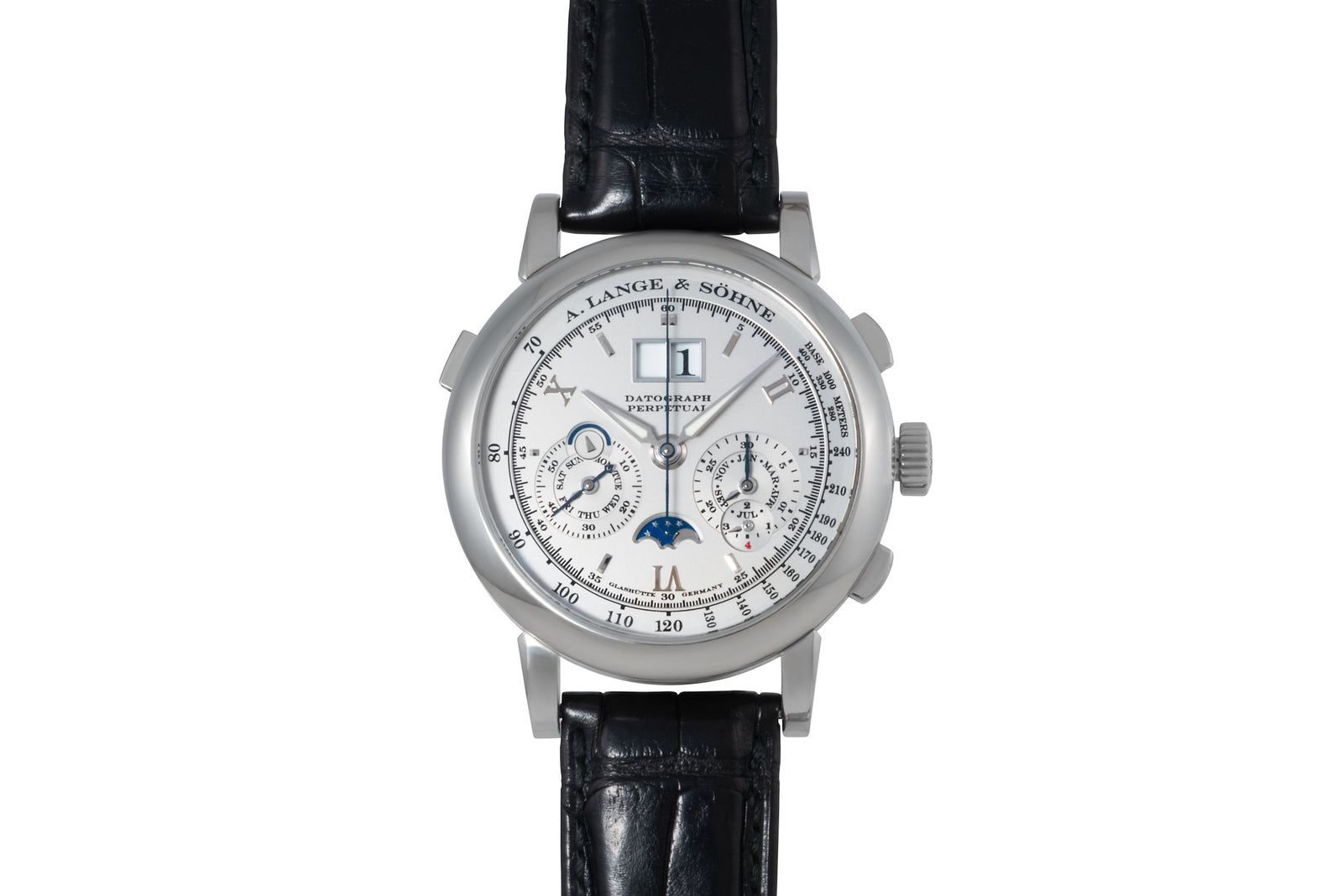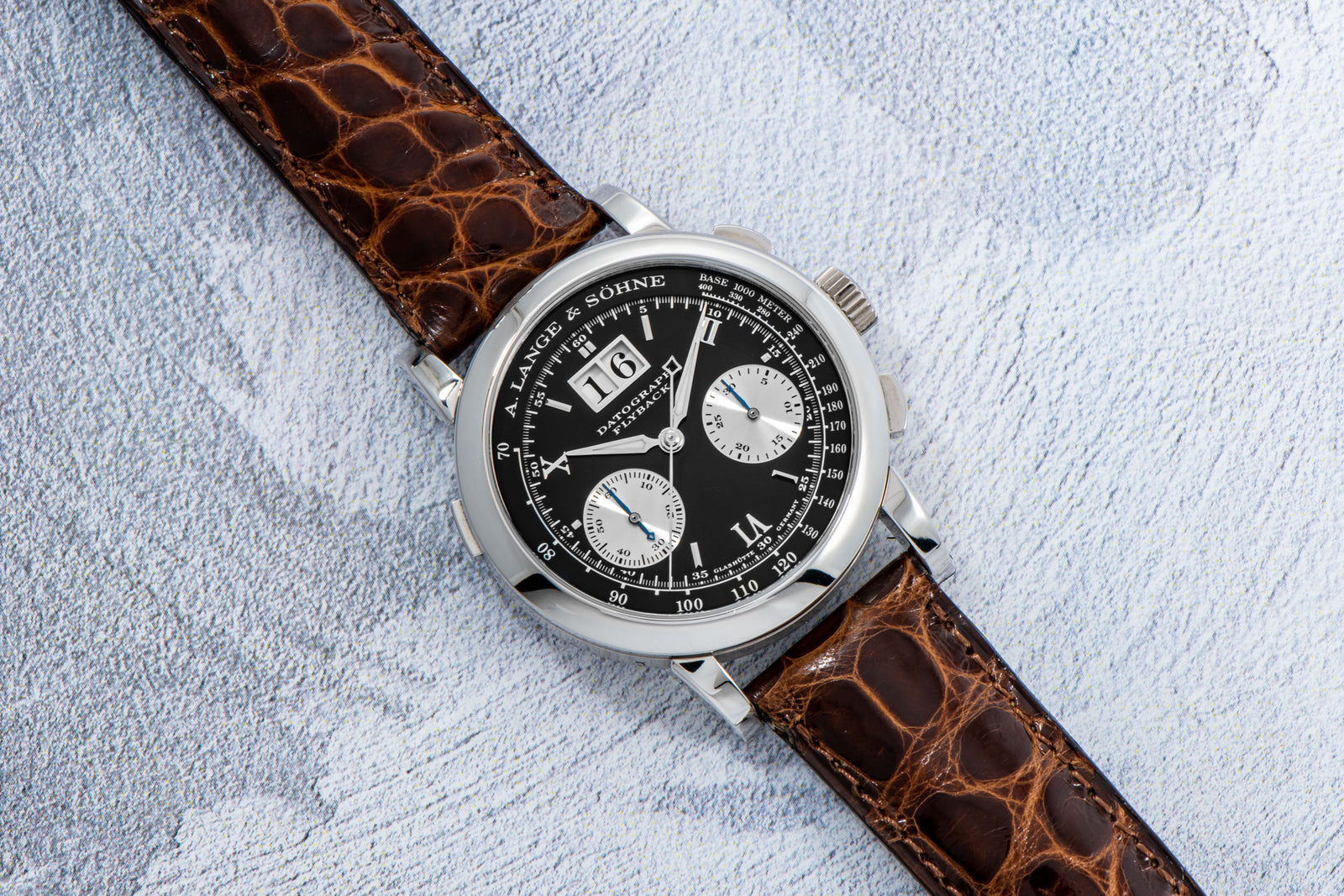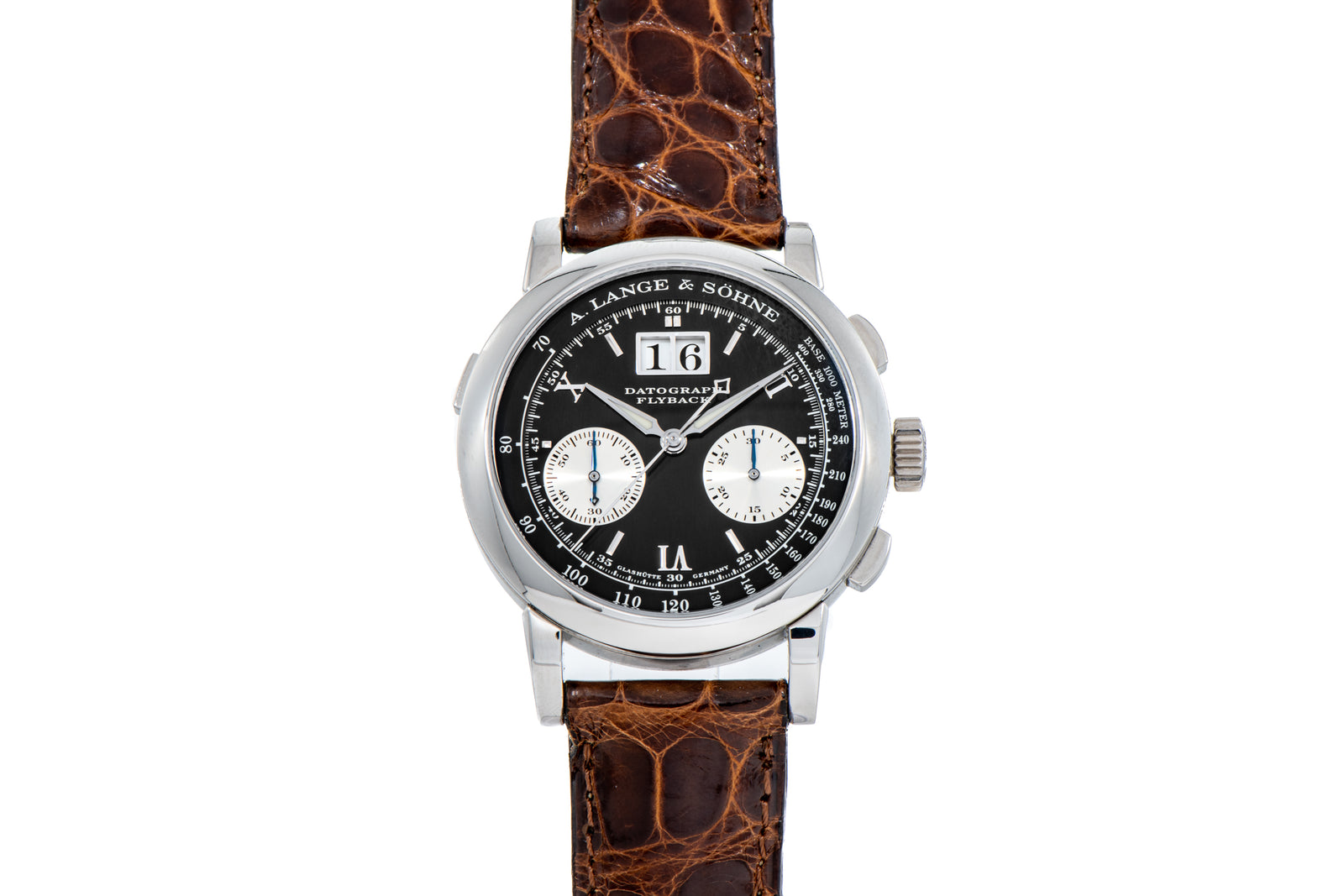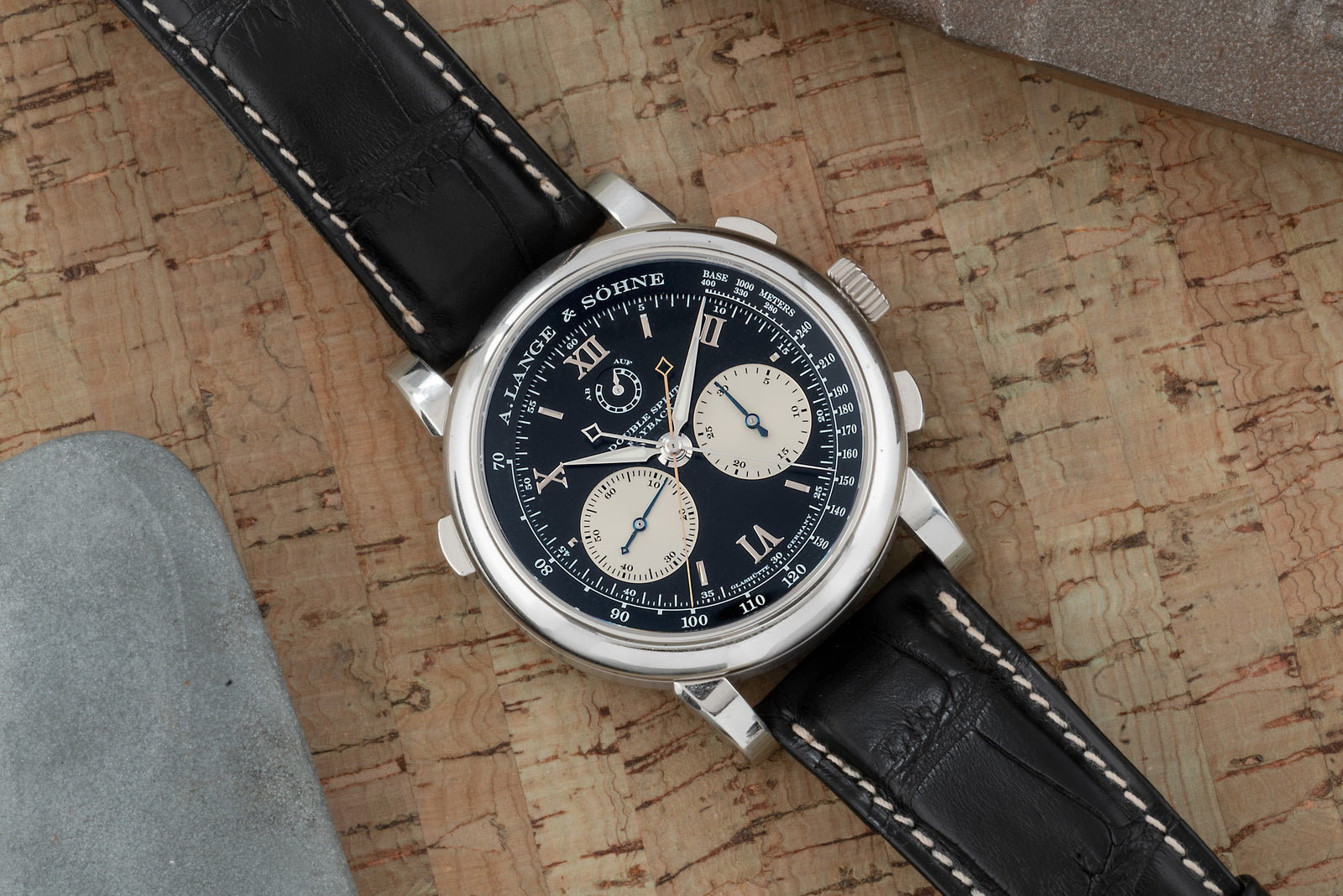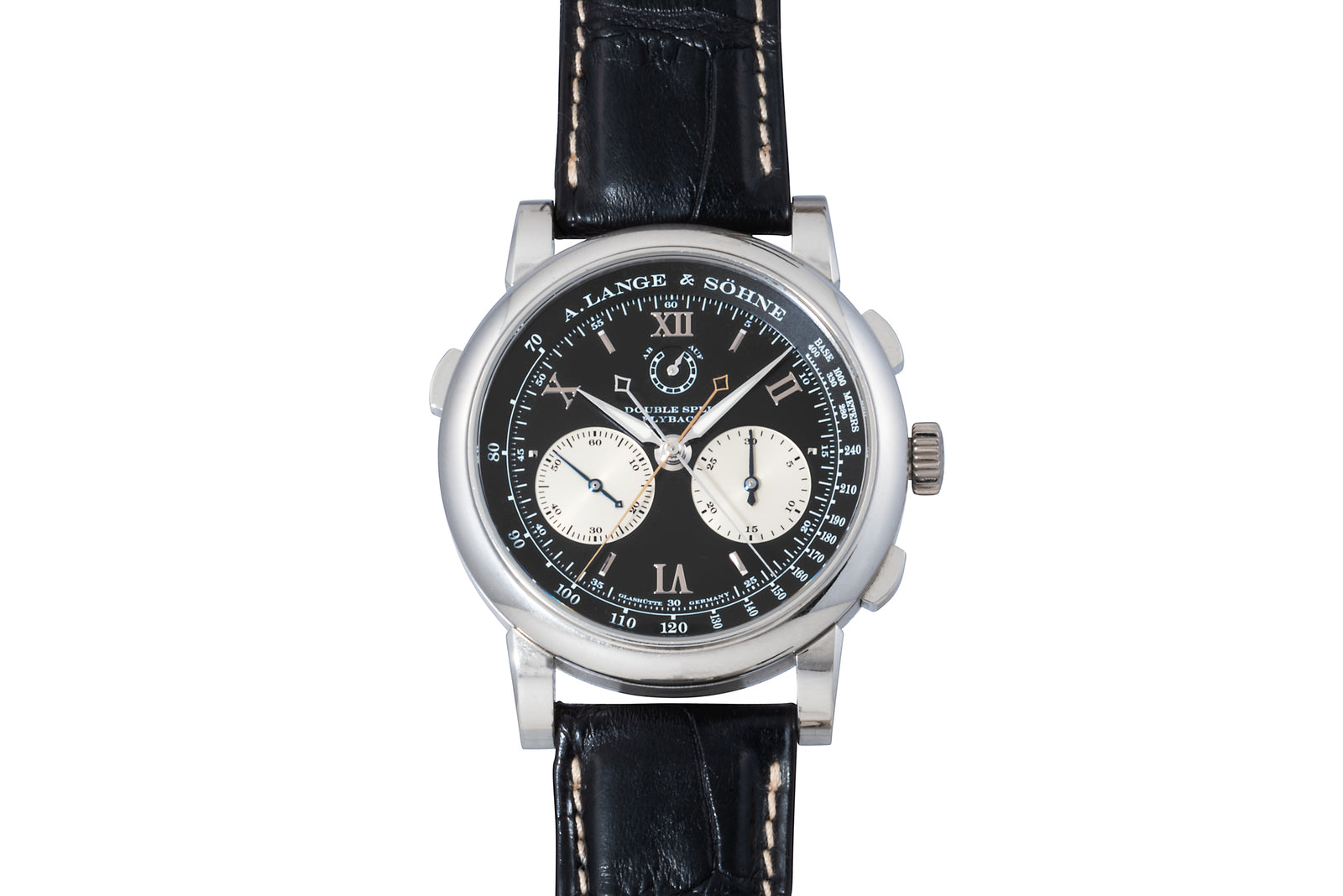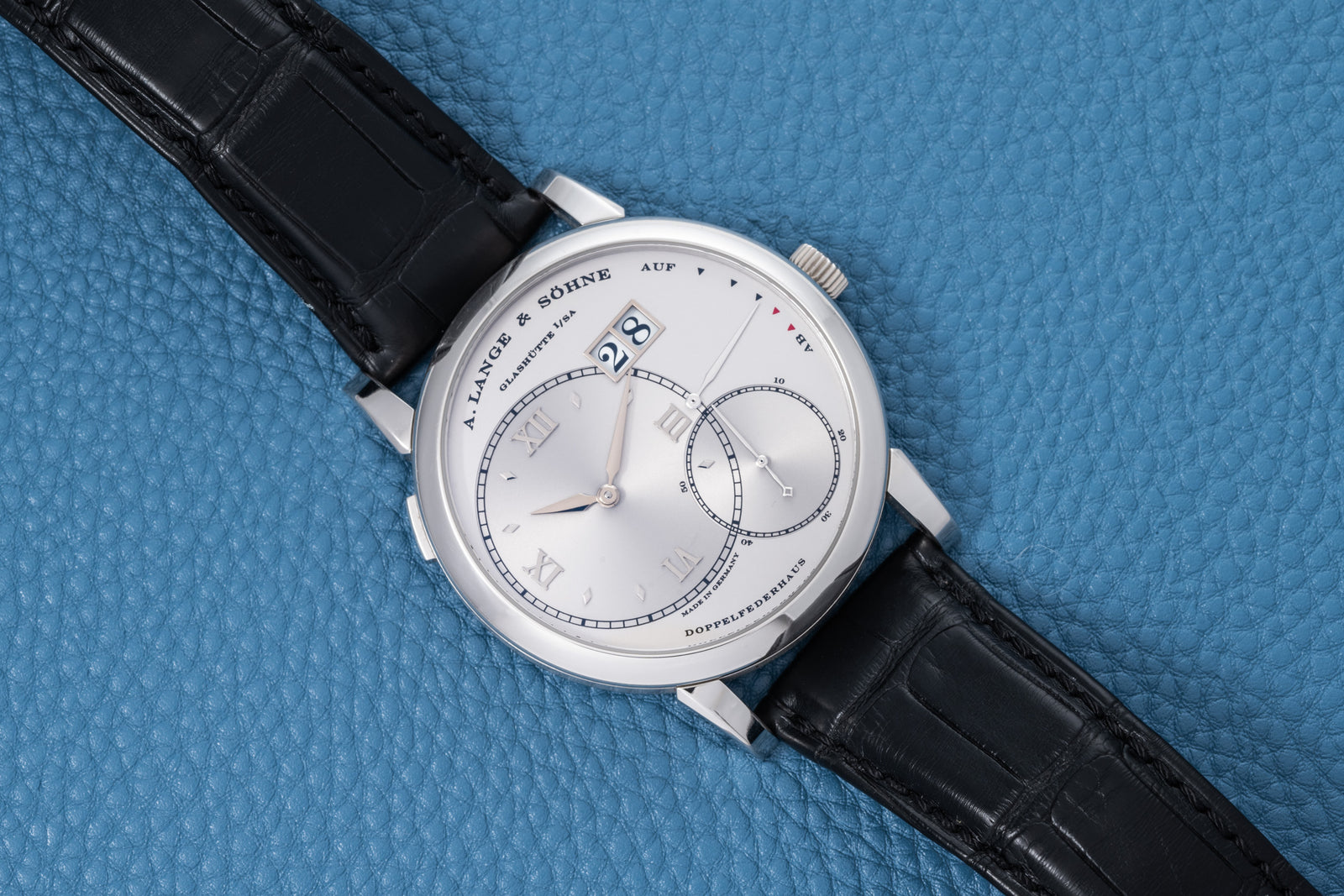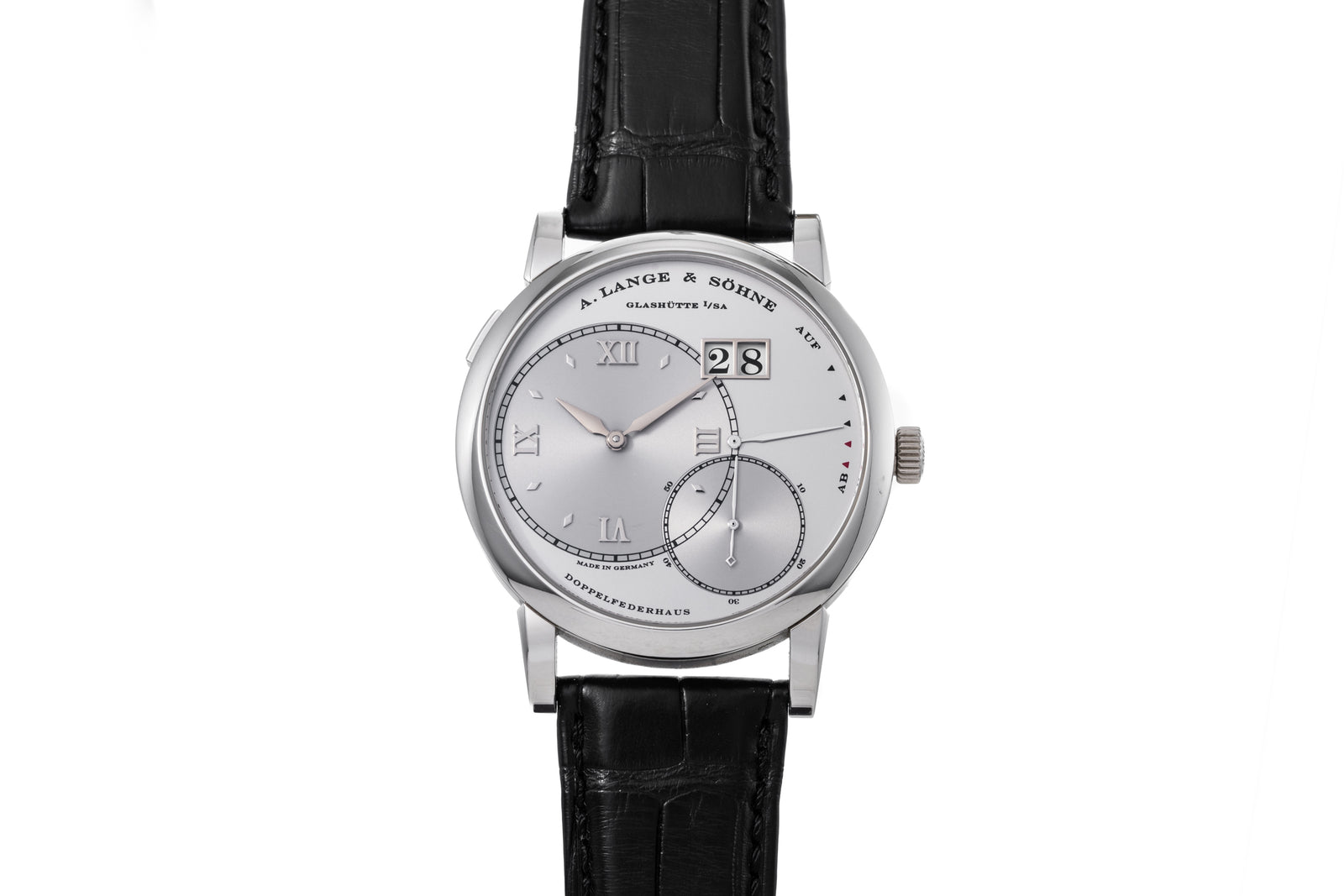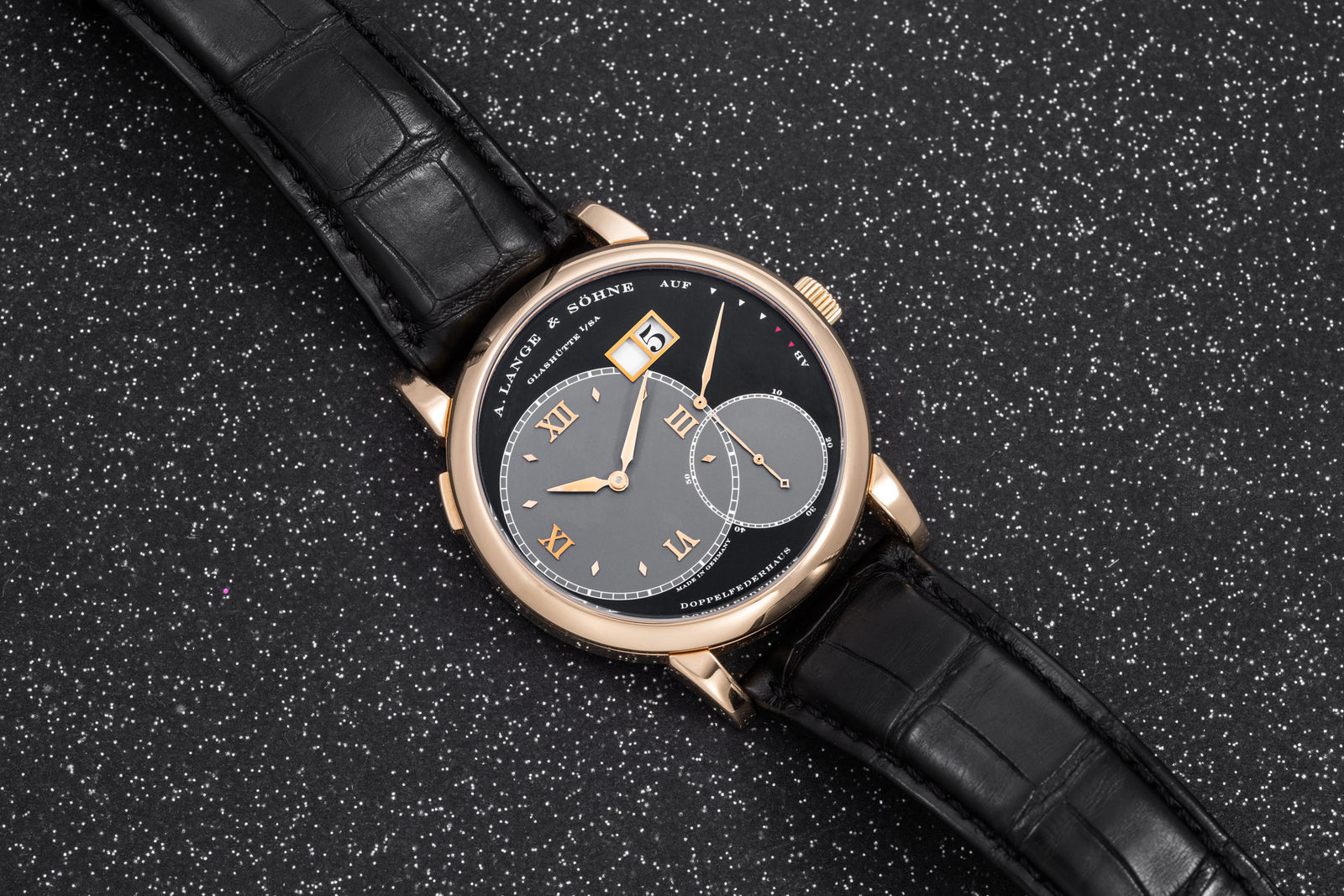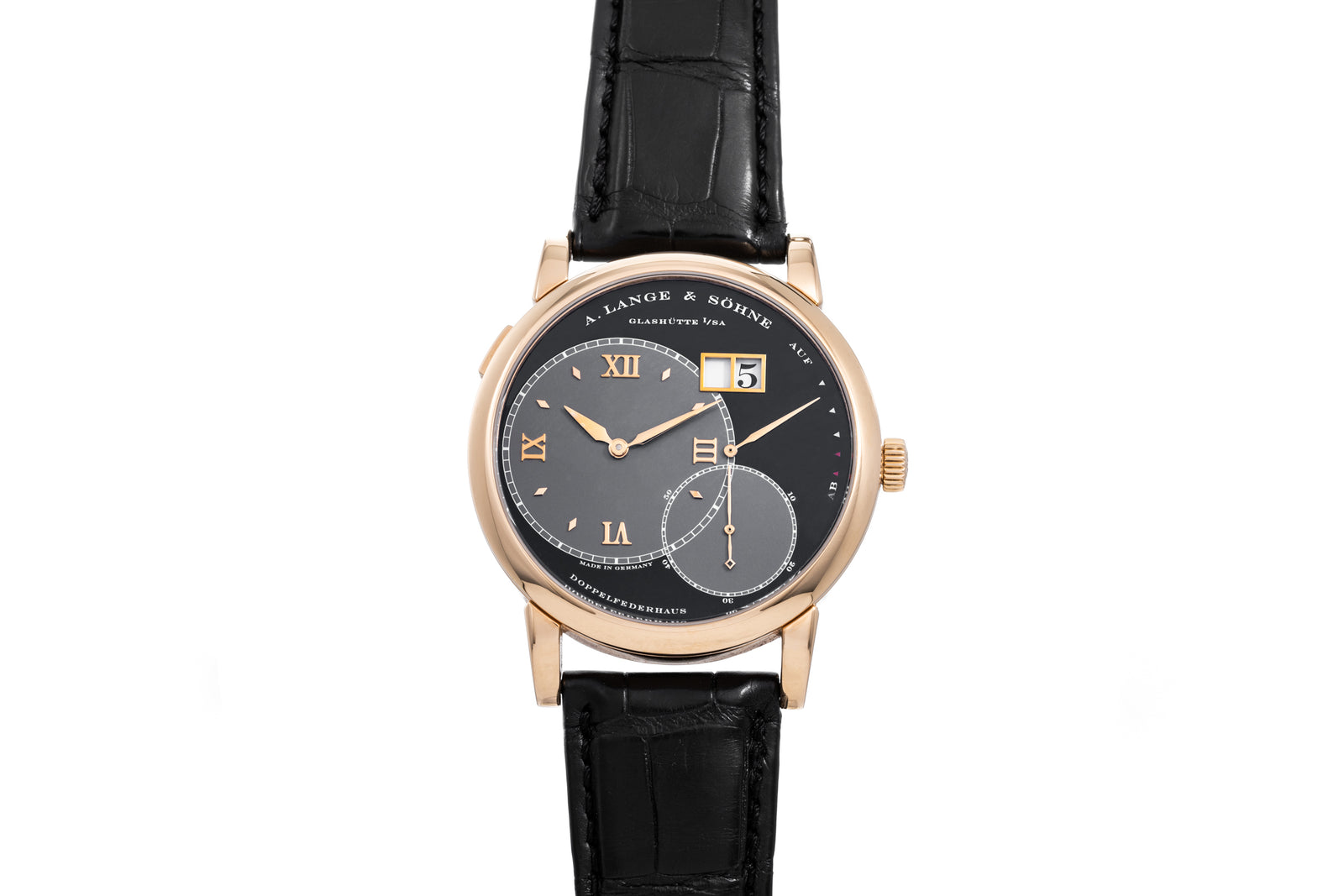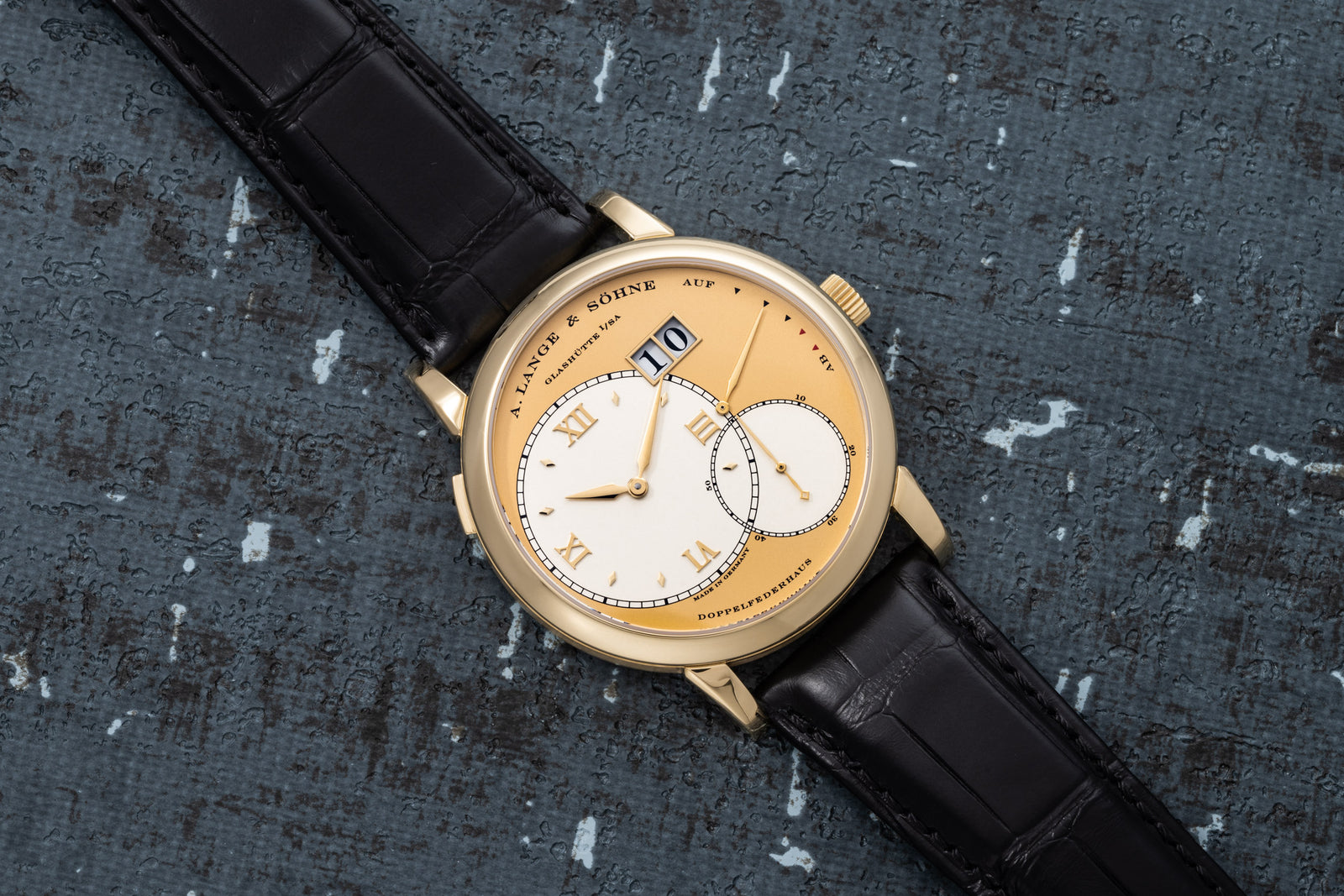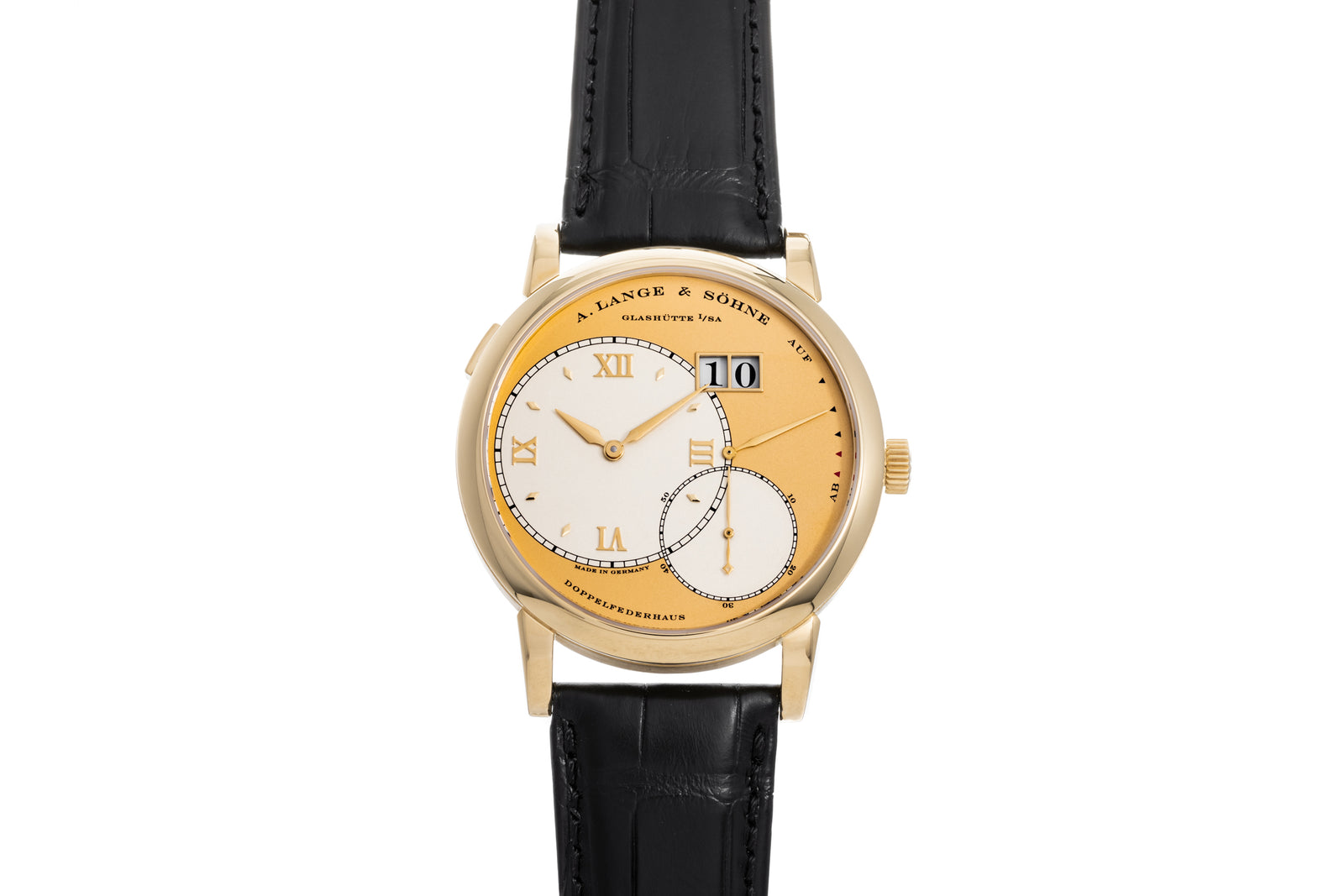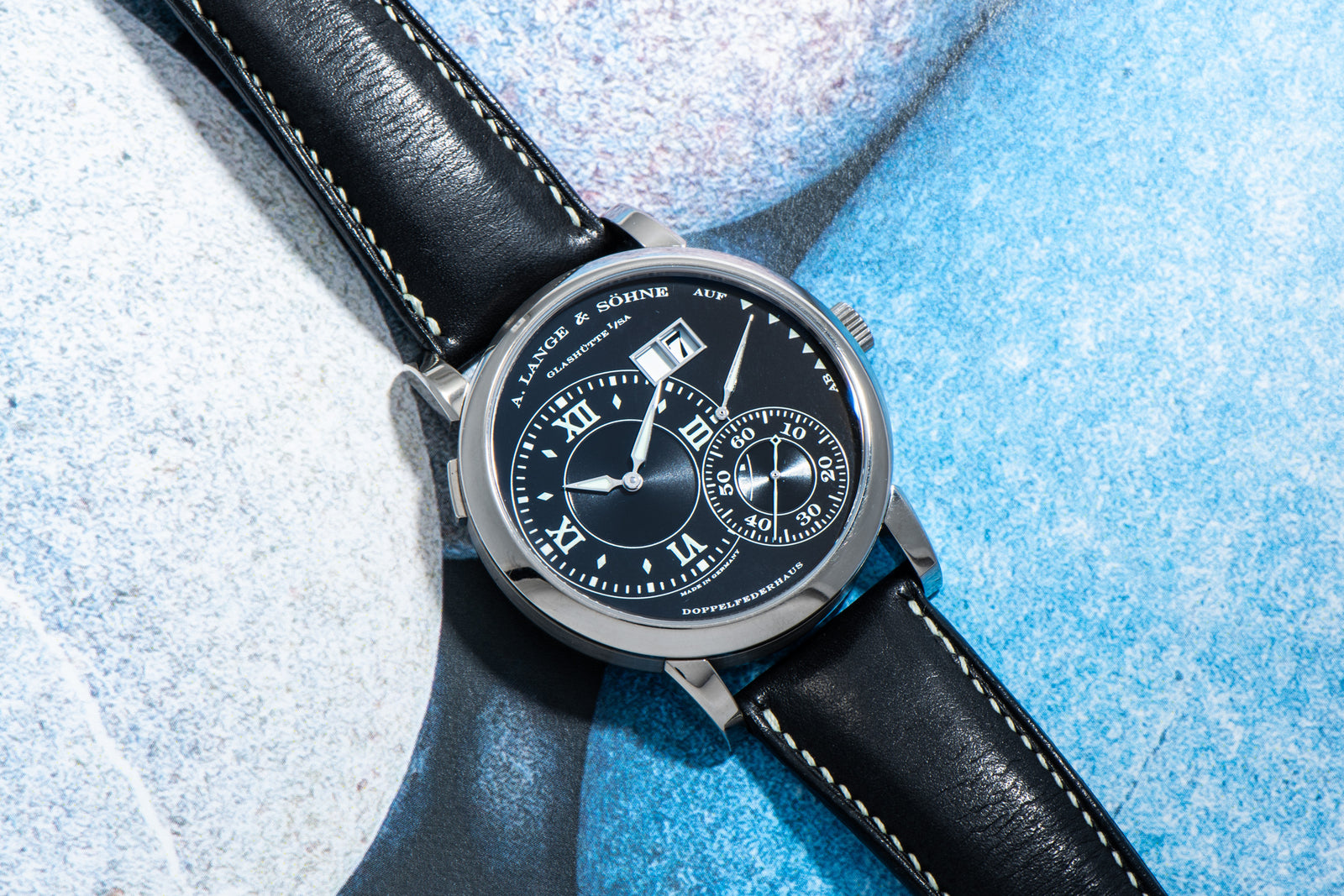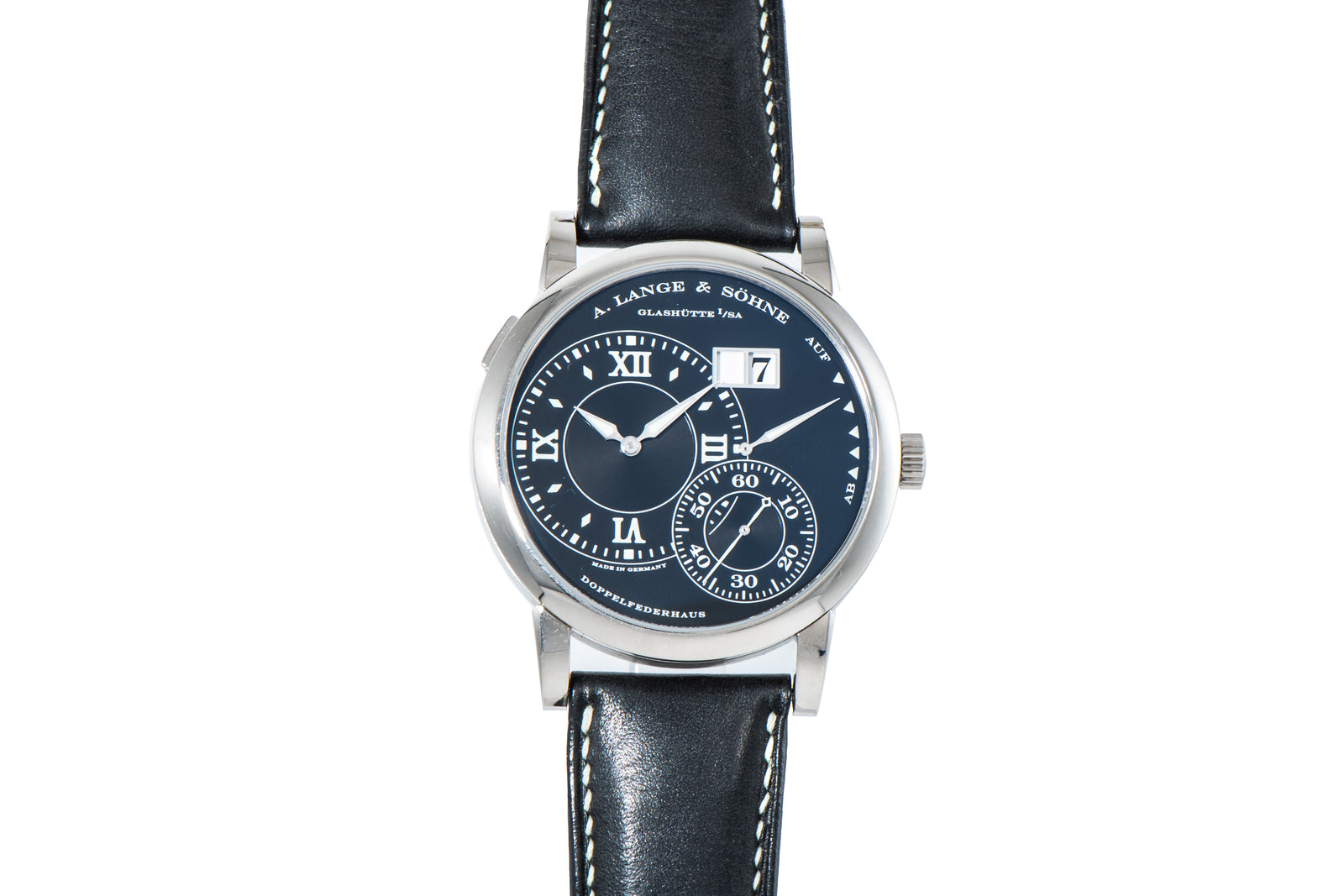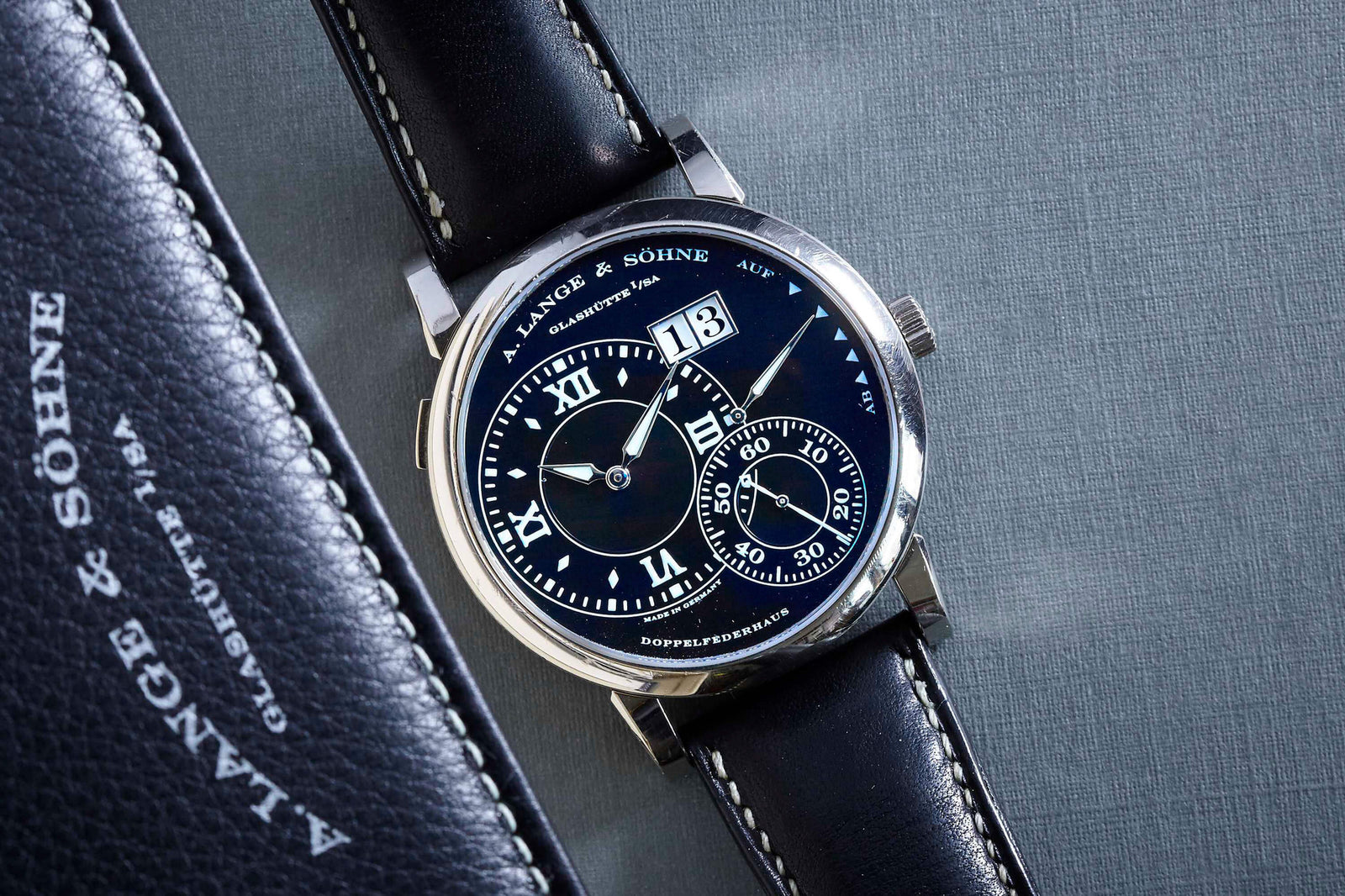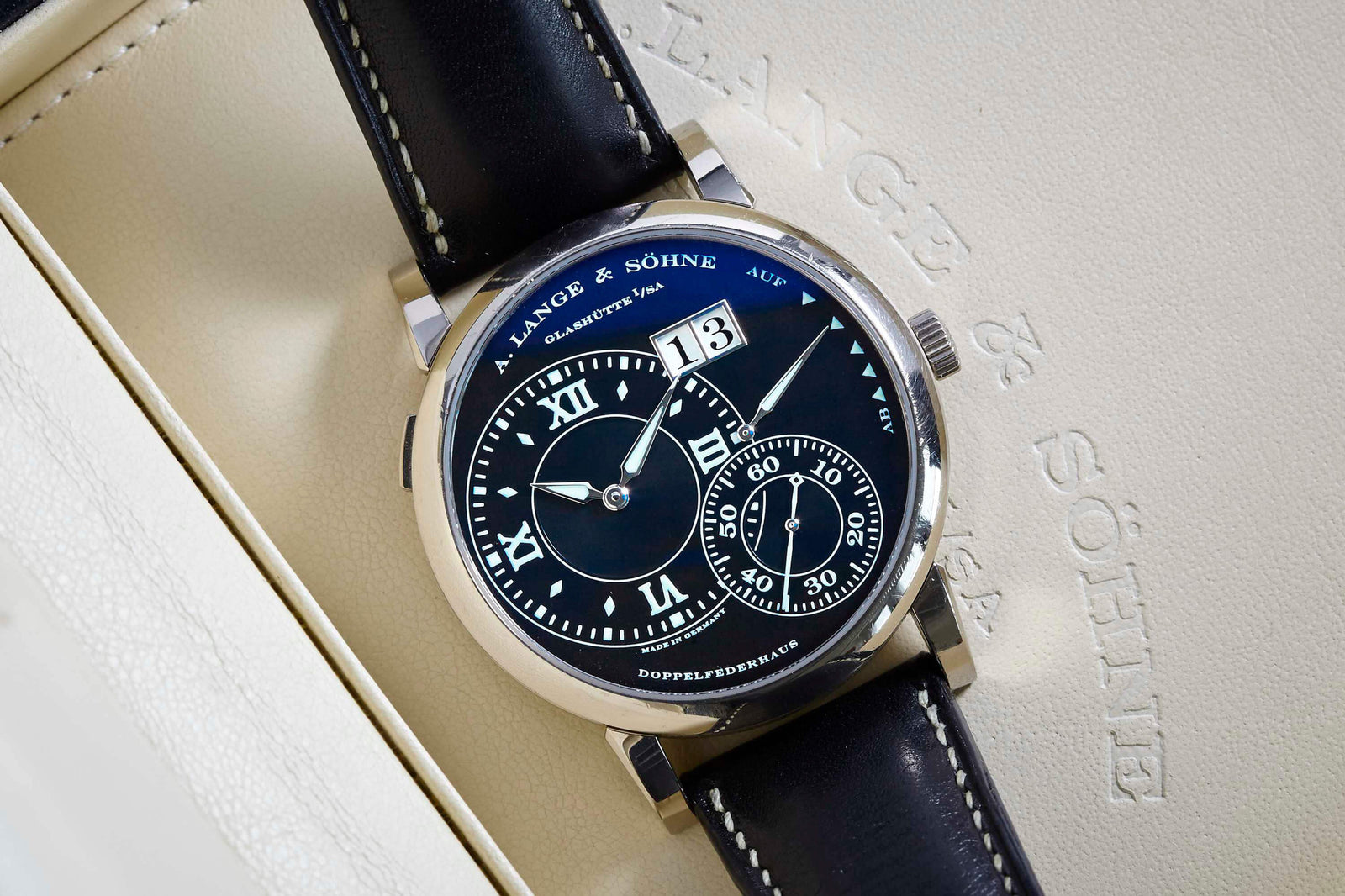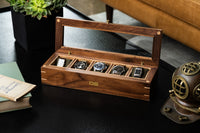Heuer Bundeswehr 3H
- Soldspan>
- Sold
Why We Love it
–
Why We Love it
–On September 14, 1961, Luftwaffe pilots Peter Pfefferkorn and Hans Eberle of the West German 32nd Flight Bomber Wing jumped into the cockpits of their F-84 bombers and unknowingly sparked an international incident.
For years, the Soviets had been pushing for Western powers to withdraw from Berlin. Meetings between Khrushchev and Kennedy did nothing to alleviate matters. While Kennedy swore in a televised broadcast that “we seek peace,” he requested that the Army increase its numbers to over 1 million troops. Khrushchev, on vacation in the resort town of Sochi, told a visiting American adviser that he had no choice but to take Kennedy’s request as a threat. The world turned uneasy eyes to Berlin.
In Berlin, in an international press conference, East German politician Walter Ulbricht declared: “Nobody has any intention of building a wall.”
But East Germany had already begun stockpiling enough barbed wire to divide East Berlin from West, and drive Western forces out of East Berlin forever.
On Saturday, August 12, leaders of East Germany met at a garden party at a house in the woods north of East Berlin. There, Ulbricht himself signed the order to erect the Wall. Under cover of night, the East German Volkspolizei and detachments from the Nationale Volksarmee (under the watchful eye of the Soviet Army) tore up streets and installed barbed wire fences along the 43 mile stretch between East and West Berlin.
In response, NATO military leaders launched “Exercise Checkmate.” In this show of military might, the air forces of Belgium, Denmark, France, the Netherlands, and West Germany participated in a mass training exercise. The 32nd Flight Bomber Wing of the West German Luftwaffe were to fly in a triangular pattern from their base in Bavaria, West Germany, to France, and then back to base again.
However, during the exercise, the magnetic compass of Pffeferkorn’s F-84 malfunctioned, causing him to misread his bearings from between 40 to 60 degrees. That, coupled with a strong westerly wind, blew his aircraft off course; Eberle, behind him in formation, had no choice but to follow, and the two pilots unknowingly flew over the East German border.
As the two pilots tried to pinpoint their exact location, they missed frantic calls from a West German base, warning them of the danger of their position.
It wasn’t until they were well into East German airspace that the pilots issued a Mayday call. An aircraft controller in the French section of West Berlin answered their call and issued them permission to land at Tegel airport. As the pilots rerouted their course, American air traffic controllers at Tempelhof airport—in the American sector of West Berlin—noted that the two wayward pilots were being pursued by a squadron of Soviet fighters.
The Allies were faced with a decision. Either the two pilots would turn around and face the approaching Soviet squadron, or they should continue on their course and avoid conflict. The American controller advised caution, and the pilots continued to Tegel, taking cover in a cloud bank.
Once they safely landed, the West German Defense Minister issued an apology to Soviet representatives in Bonn, the capital of West Germany. In reply, the Soviets called the incident “provocation” and threatened to shoot down any aircraft that strayed into East German airspace. Pfefferkorn and Eberle were grounded, and their commanding officer was relieved of his position.
And what of the two F-84 bombers that these two unlucky pilots flew in this incident? Rumor had it that they were smuggled out of West Berlin, stripped of Luftwaffe insignia, and repainted in US Air Force colors. It wasn’t until the late 1970s that the truth was uncovered, literally—they had been buried on the grounds of Tegel Airport, and weren’t recovered until the airport was being expanded nearly a decade later.
This watch, a Heuer Bundeswehr, was General Issue for the pilots of the West German Luftwaffe. From the 1960s to the 1970s, the "Bund" (as it's affectionately known) saw a range of dial configurations that baffle those not in the know. Fortunately, the Heuer experts over at On The Dash have complied a comprehensive overview of these variations, which we'll summarize here.
There's one tell-tale sign that a Bund might have seen military service (or, to put less fine of a point on it, is from the period in which the Bund was issued to the Luftwaffe). It's one little symbol, in bright red above 6 o'clock on the dial: the letters "3H" surrounded by a circle. This indicates that the luminescent material on the numerals is tritium (Hydrogen-3). As one can tell from OnTheDash's breakdown, the 3H symbol came in four different variations, with the characters in varying sizes. However, no matter the size of the 3H symbol, it meant one thing: the watch can be dated (most likely) to the 1960s to 1970s.
The Bund that we offer here, with the requisite 3H symbol, is classic Bund--in short, everything you want a pilot's watch to be. The dual sub-register layout of the dial is highly legible, in the way that the most iconic pilot's watches are: the chronograph registers are symmetrically-arranged on a horizontal axis, offset by the Heuer logo at 12 o'clock and the 3H symbol at 6. The numerals are big and bold, encircled by a 60-minute chapter ring, giving it an austere beauty.
And the matte case is, as you'd expect, substantial. At roughly 43mm it dominates the wrist, though not uncomfortable so (in fact, it feels surprisingly light on the wrist, particularly on a nylon strap). Like the Heuer Autavias of the period, the case is crowned by a rotating 60-minute bezel.
As with many military watches, the Bund is a front-loader, with the movement being secured by the screw-mounted case back that is attached to the bezel. The Bund, being a manually-wound flyback chrono, used a host of Valjoux movements, from the Valjoux 22 to the cal. 220 to the cal. 230. Sturdy, dependable, it's the sort of watch you want strapped to your wrist whether you're dodging enemy fighters at 35,000 feet or engaged in more terrestrial pursuits...
A:S Guarantee
+
A:S Guarantee
+Our Pledge
Analog:Shift stands behind the authenticity of our products in perpetuity.
Condition
Since our pieces are vintage or pre-owned, please expect wear & patina from usage and age. Please read each item description and examine all product images.
Warranty
We back each Analog:Shift vintage timepiece with a one-year mechanical warranty from the date of purchase.
International Buyers
Please contact us prior to purchase for additional details on shipping and payment options.
Shipping & Returns
+
Shipping & Returns
+All of our watches include complementary insured shipping within the 50 states.
Most of our products are on hand and will ship directly from our headquarters in New York City. In some cases, watches will be shipped directly from one of our authorized partners.
We generally ship our products via FedEx, fully insured, within 5 business days of purchase. An adult signature is required for receipt of all packages for insurance purposes. Expedited shipping is available at an additional cost. We are also happy to hand deliver your purchase in Manhattan or you may pick it up at our showroom.
Returns must be sent overnight or by priority international delivery, fully insured and paid for by the customer. A restocking fee may apply. Watches must be returned in the same condition as initially shipped.
We welcome international buyers, please contact us prior to purchase for additional details on shipping and payment options.
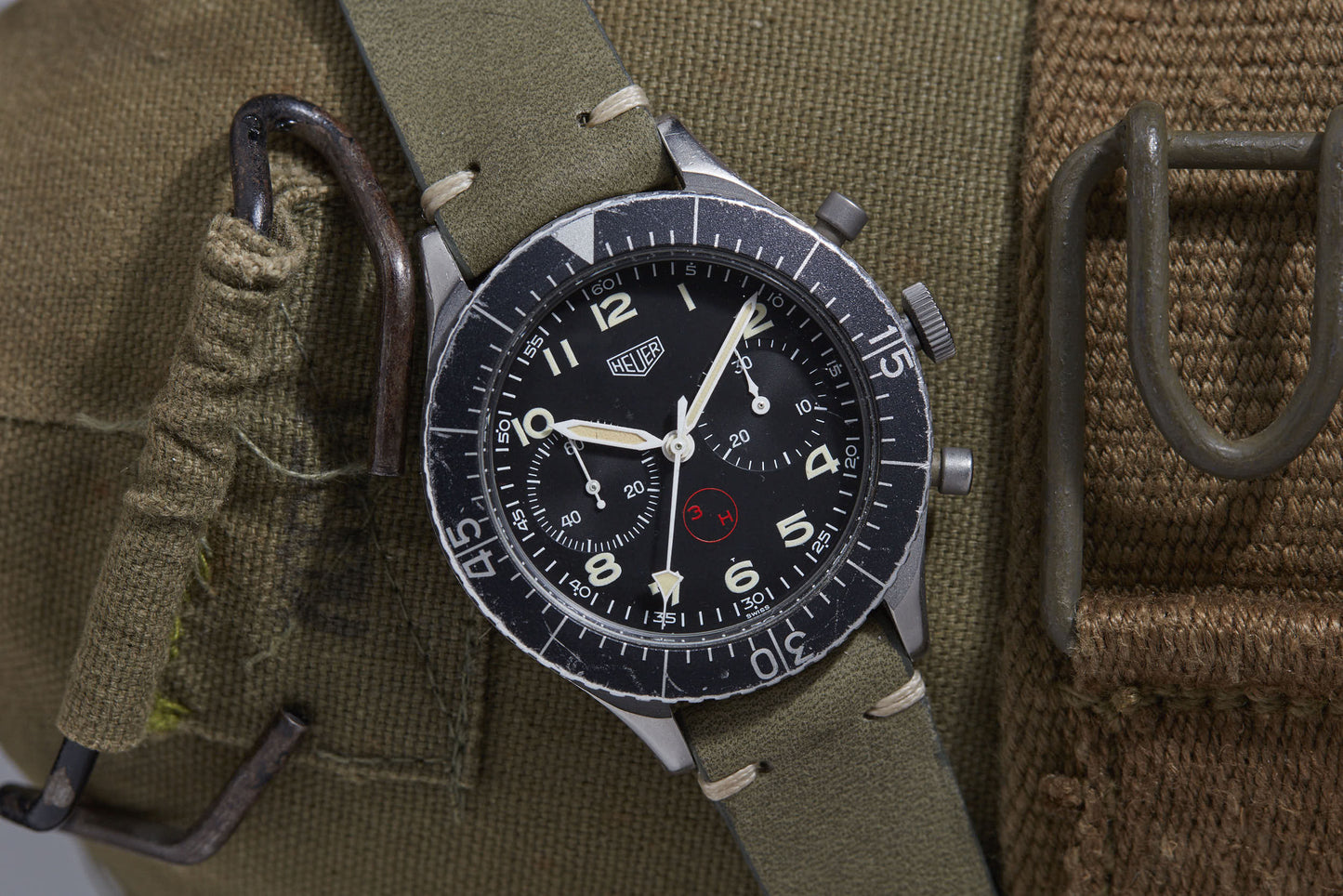
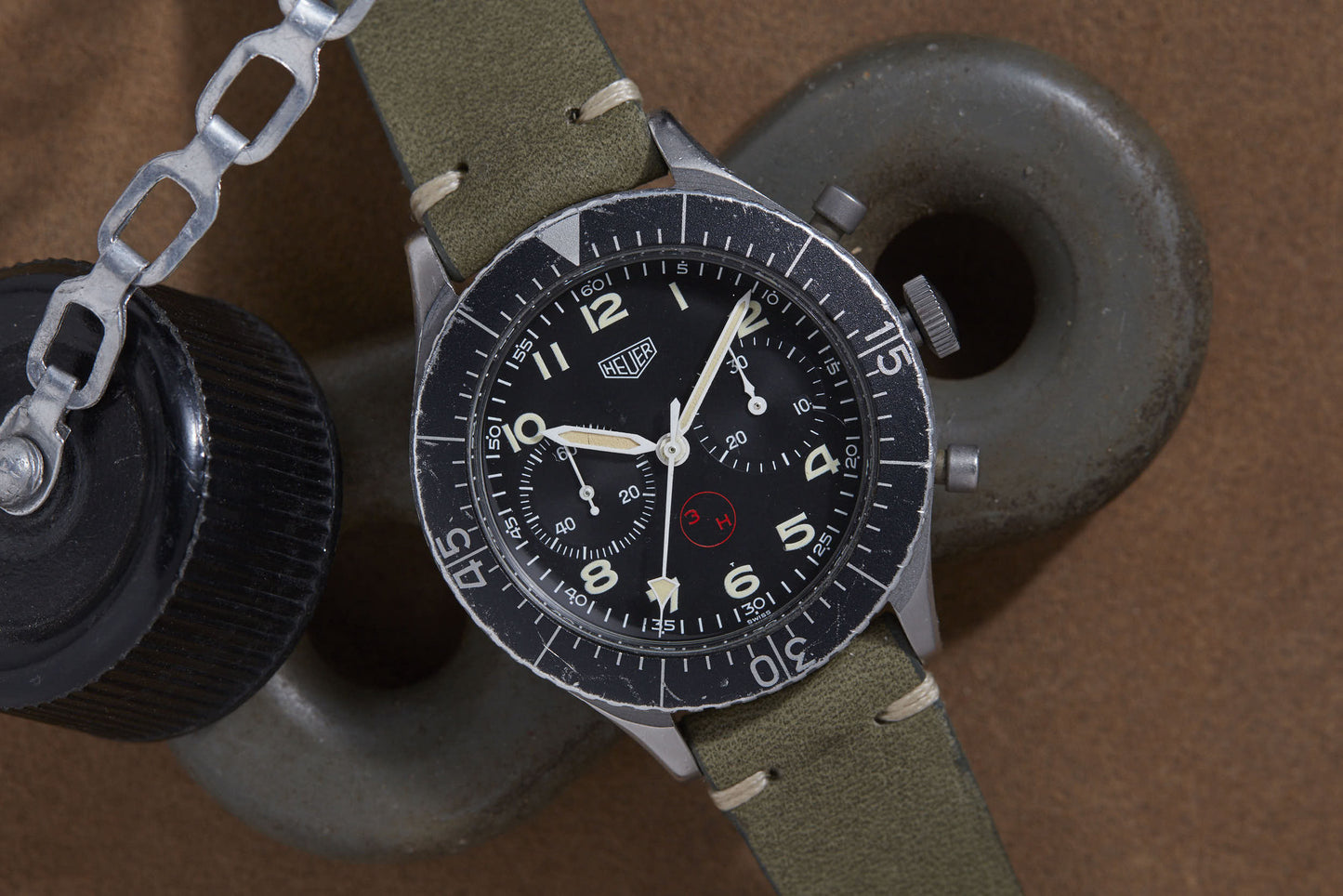
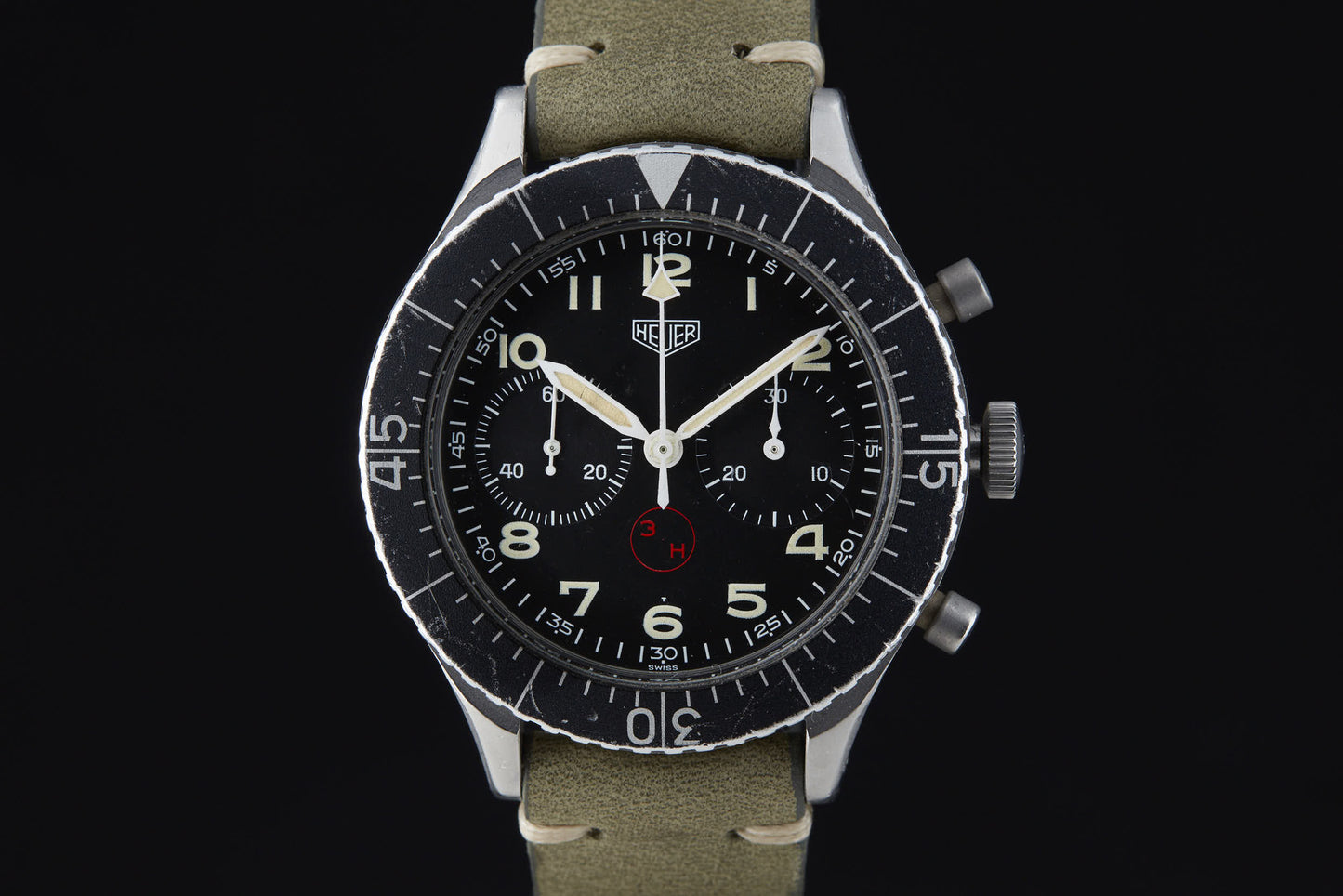
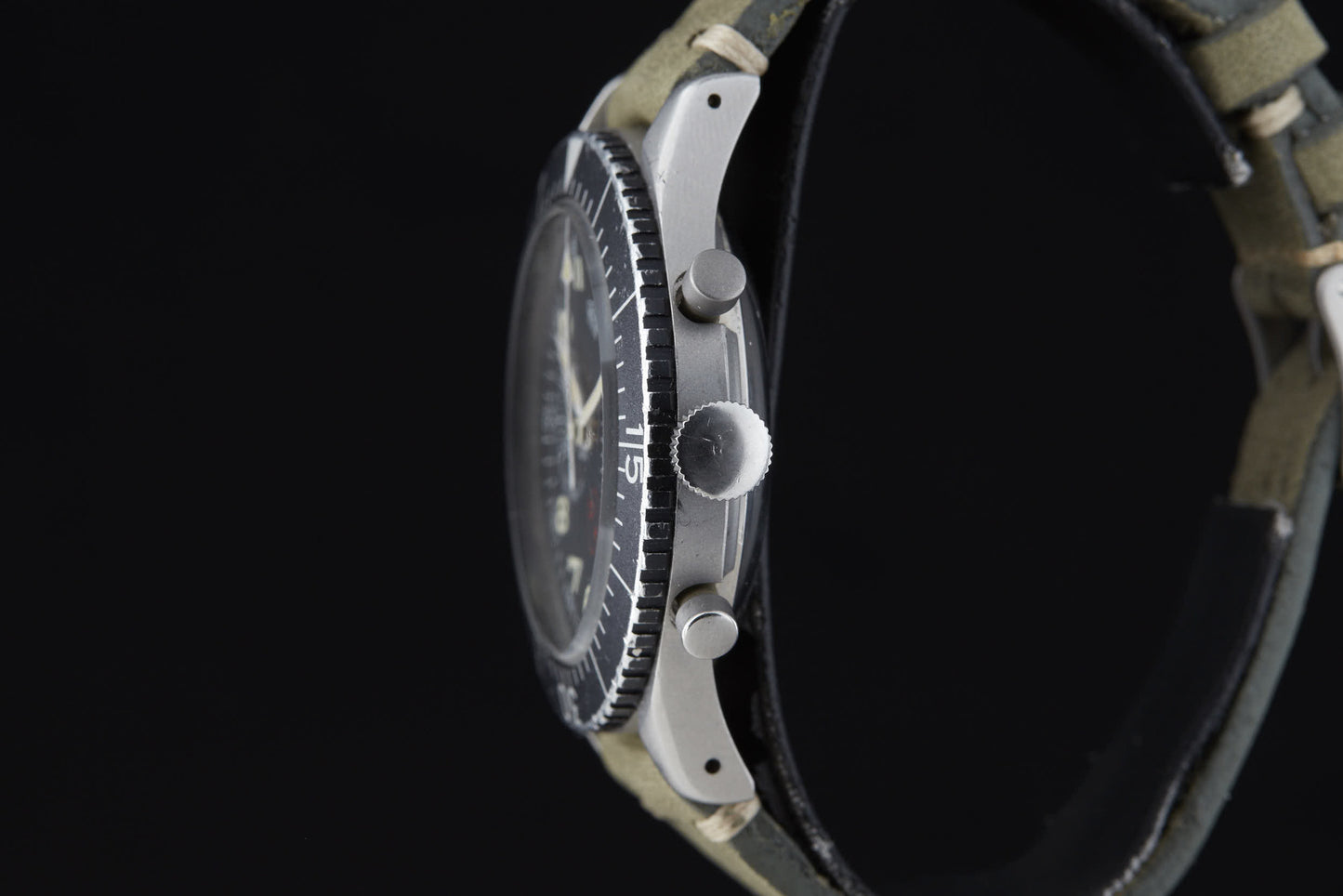
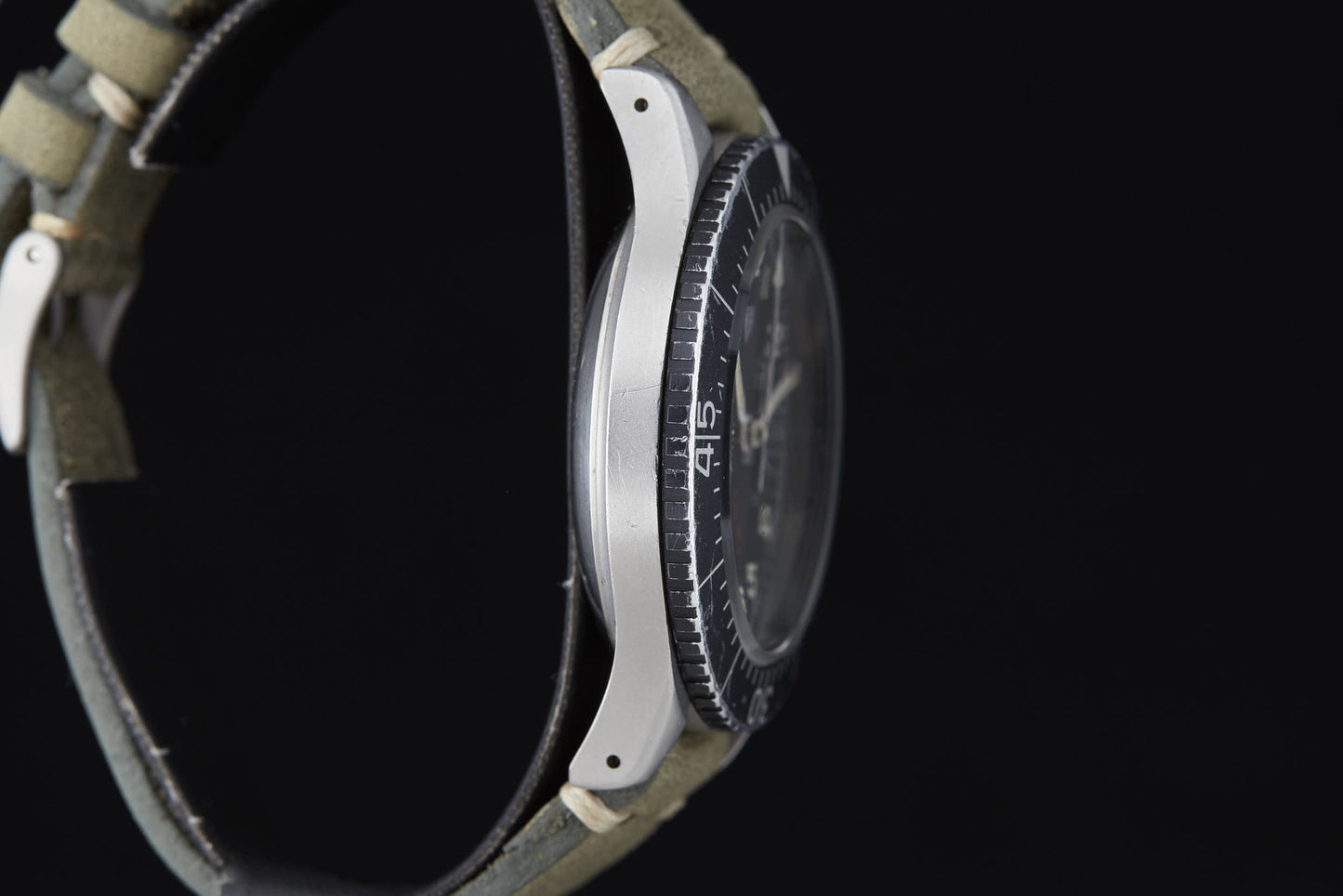
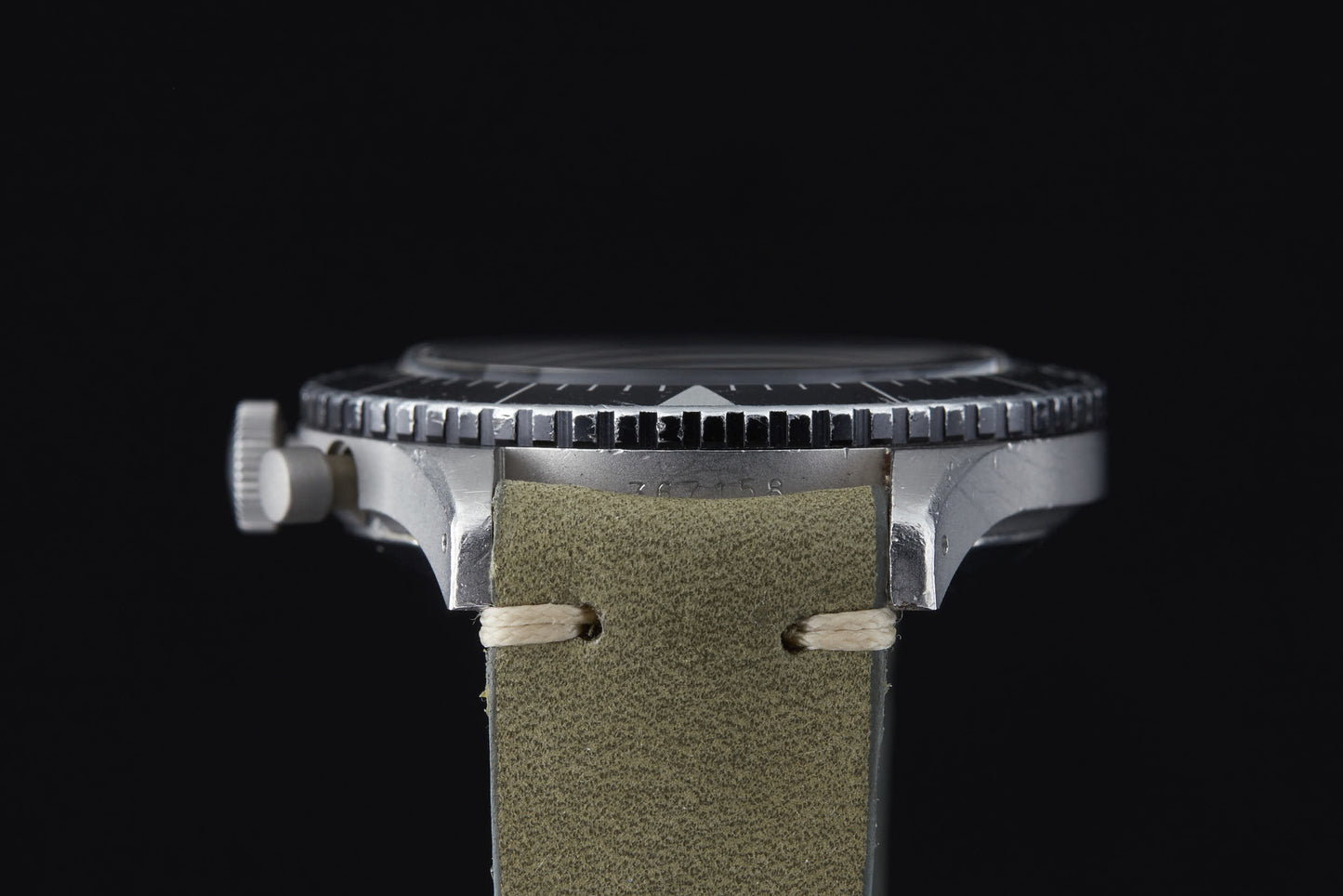
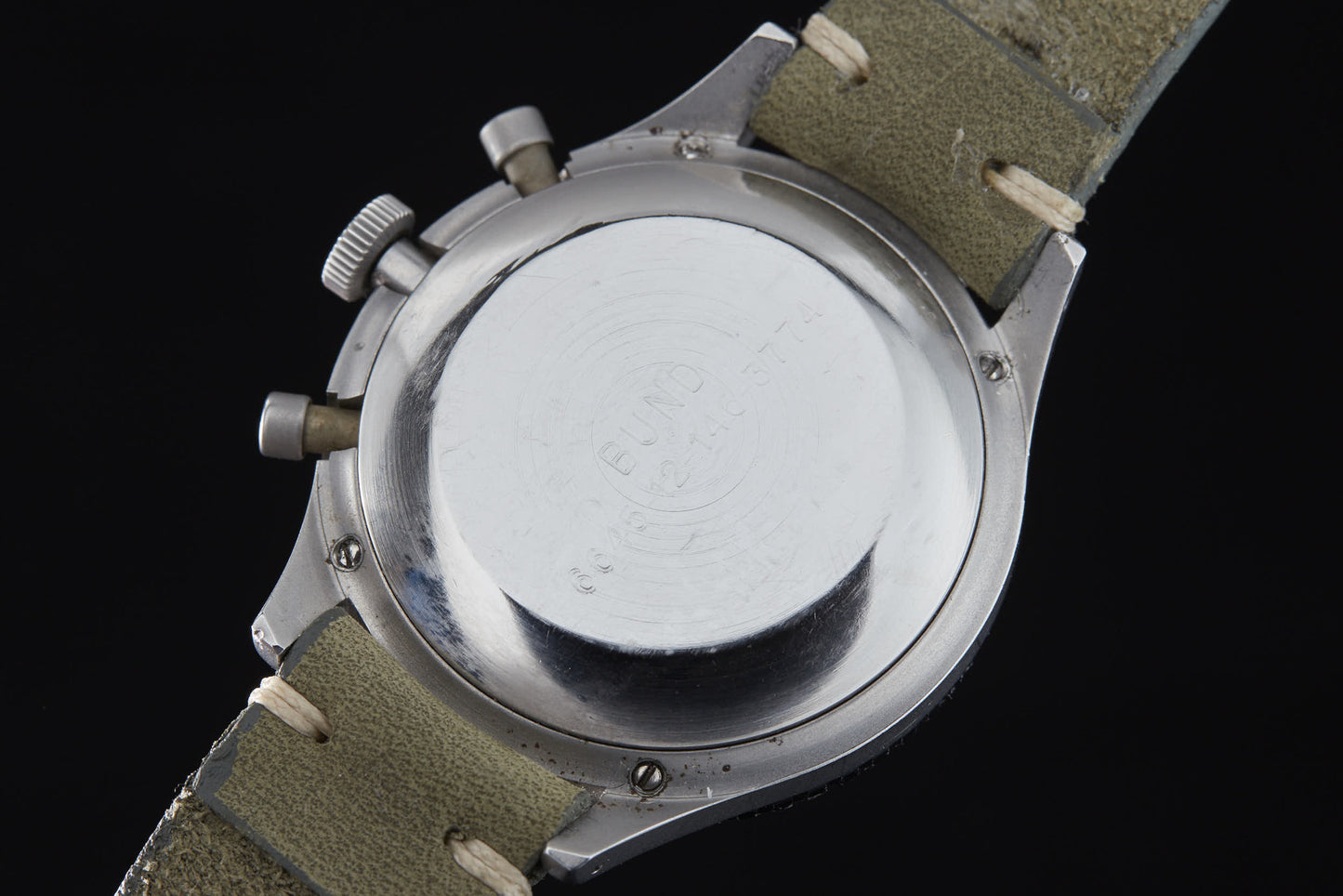
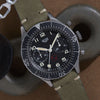
Heuer Bundeswehr 3H
- Soldspan>
- Sold
